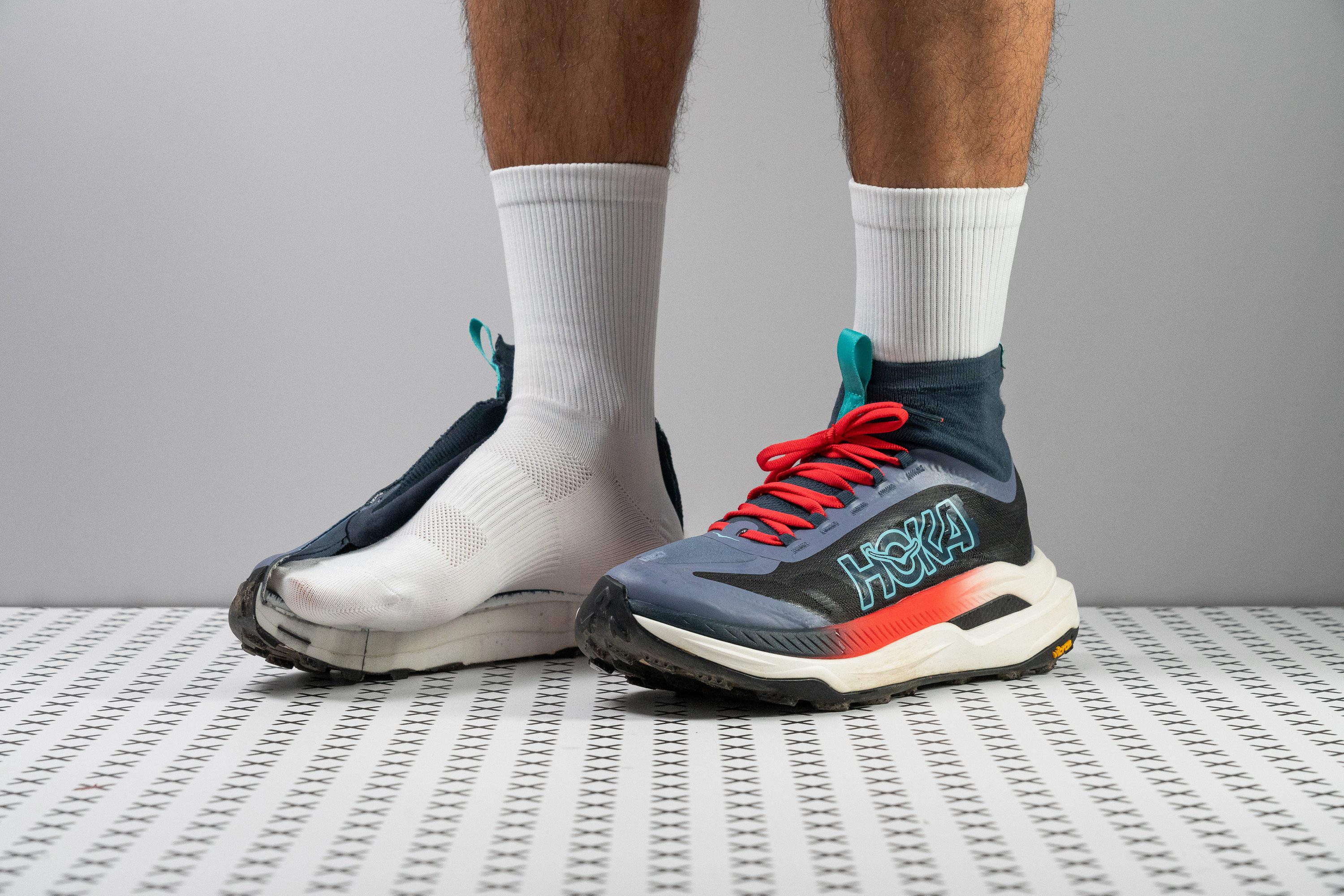Our verdict
- Top pick in best trail running shoes
- Top pick in best ultra running shoes
Pros
- A true supershoe for trails
- Ultra-grippy and durable Vibram outsole
- Fantastic energy return from PEBA foam
- Versatile for both long runs and ultra races
- Stability improvements
- Shields from debris effectively
- Premium MATRYX upper
- Designed to dominate ultra-distance events
- Secure fit
Cons
- Sky-high price tag
- Heavier than the Tecton X 2
- Absolutely not for wide feet
- New ankle gaiter may not work for everyone
Audience verdict
Comparison
The most similar running shoes compared
+ + Add a shoe | |||||
|---|---|---|---|---|---|
| Audience score | 84 Good! | 90 Superb! | 89 Great! | 87 Great! | |
| Price | £220 | £220 | £230 | £200 | |
| Trail terrain | LightModerate | Light | LightModerate | Moderate | |
| Shock absorption | High | High | High | Moderate | |
| Energy return | High | Moderate | High | High | |
| Traction | - | High | - | - | |
| Arch support | Neutral | Neutral | Neutral | Neutral | |
| Weight lab Weight brand | 9.7 oz / 275g 10.3 oz / 292g | 9.1 oz / 258g 9.2 oz / 261g | 10.5 oz / 299g 10.1 oz / 286g | 9.5 oz / 269g 9.1 oz / 258g | |
| Drop lab Drop brand | 6.9 mm 5.0 mm | 10.3 mm 5.0 mm | 11.8 mm 8.5 mm | 7.1 mm 6.0 mm | |
| Strike pattern | Mid/forefoot | Heel | Heel | Mid/forefoot | |
| Size | Slightly small | True to size | True to size | True to size | |
| Midsole softness | Soft | Soft | Soft | Soft | |
| Difference in midsole softness in cold | Small | Normal | Small | Small | |
| Plate | Carbon plate | Carbon plate | Carbon plate | Carbon plate | |
| Toebox durability | Good | Very bad | Very bad | - | |
| Heel padding durability | Decent | Good | Good | - | |
| Outsole durability | Good | Decent | Good | - | |
| Breathability | Moderate | Breathable | Moderate | Moderate | |
| Width / fit | Narrow | Medium | Medium | Narrow | |
| Toebox width | Medium | Narrow | Wide | - | |
| Stiffness | Stiff | Stiff | Stiff | Stiff | |
| Torsional rigidity | Stiff | Stiff | Stiff | Stiff | |
| Heel counter stiffness | Flexible | Moderate | Moderate | Moderate | |
| Lug depth | 4.0 mm | 2.7 mm | 3.0 mm | 3.4 mm | |
| Heel stack lab Heel stack brand | 37.8 mm 40.0 mm | 44.7 mm 44.0 mm | 36.6 mm 38.0 mm | 33.4 mm 36.0 mm | |
| Forefoot lab Forefoot brand | 30.9 mm 35.0 mm | 34.4 mm 39.0 mm | 24.8 mm 29.5 mm | 26.3 mm 30.0 mm | |
| Widths available | Normal | NormalWide | Normal | Normal | |
| Season | All seasons | SummerAll seasons | All seasons | All seasons | |
| Removable insole | ✓ | ✓ | ✓ | ✓ | |
| Orthotic friendly | ✓ | ✓ | ✓ | ✓ | |
| Waterproofing | Water repellent | - | - | - | |
| Ranking | #234 Bottom 37% | #61 Top 17% | #85 Top 23% | #163 Top 44% | |
| Popularity | #166 Top 45% | #313 Bottom 15% | #220 Bottom 40% | #242 Bottom 34% |
Who should buy
We believe the HOKA Tecton X 3 is an outstanding trail shoe for:
- Those who prioritise performance over price and want a true trail supershoe packed with top-tier materials—perfect for both training and racing on rugged terrain.
- HOKA fans who liked the Tecton X 2 but wanted more energy return—this edition’s full-PEBA midsole solves that issue.
- Trail runners with narrow feet who need maximum cushioning and impact protection.
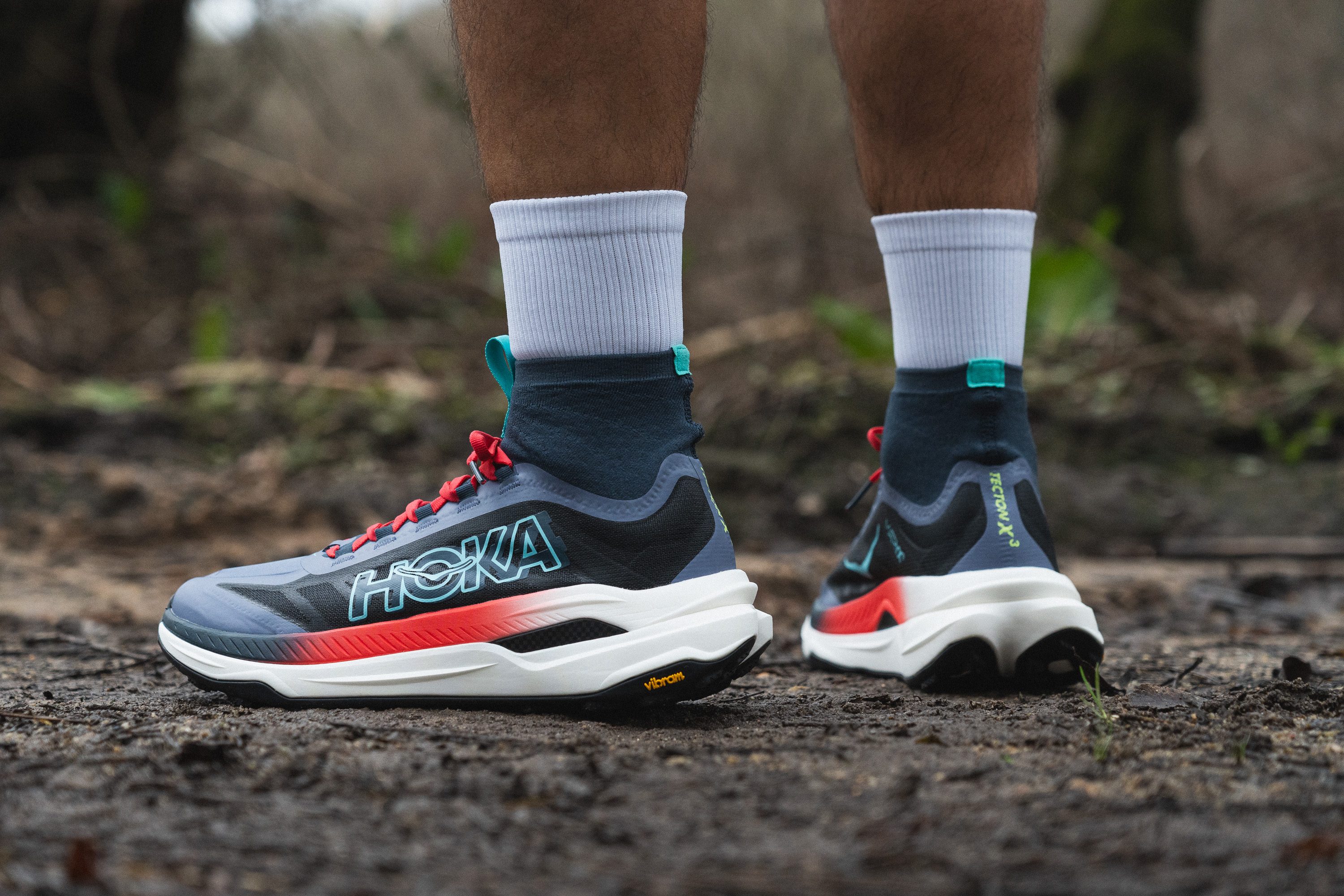
Who should NOT buy
We think runners with wide feet should avoid the HOKA Tecton X 3, as its snug toebox leaves little room for natural toe splay. Even those with average-width feet who experience swelling during long races might find it restrictive. For a more accommodating fit, we suggest the Altra Mont Blanc Carbon, which provides a foot-shaped toebox while still offering race-ready performance.
Additionally, we believe the Tecton X 3 isn't the best choice for those seeking a shoe for easy runs or hiking. Its aggressive design and high price make it excessive for those activities. Instead, we recommend shoes like the HOKA Speedgoat 6 or the Saucony Peregrine 14, which offer a more balanced blend of comfort, flexibility, and durability at a much more reasonable cost.
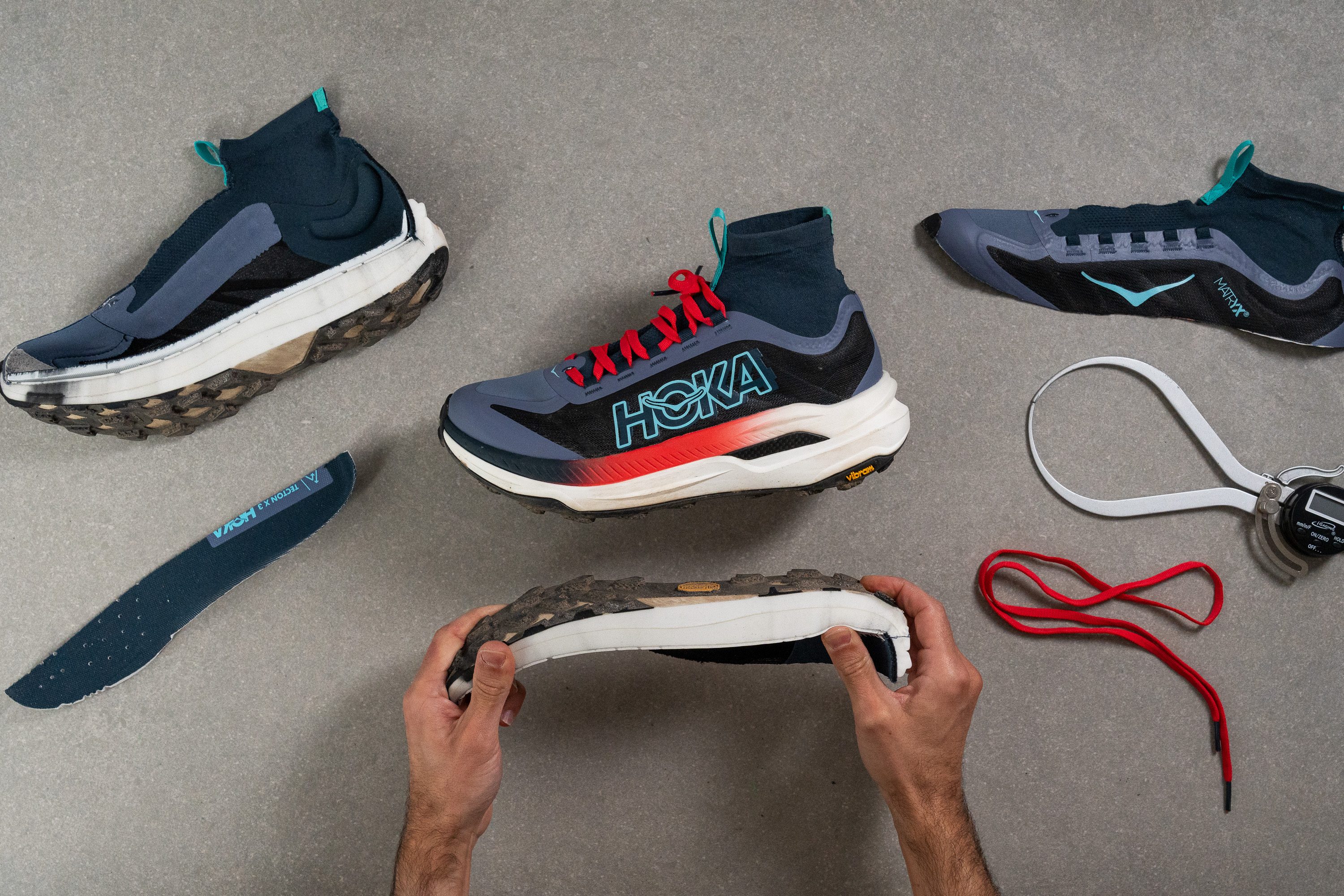
Cushioning
Shock absorption
The 100% PEBA foam in the Tecton X 3 delivers outstanding protection for long runs and ultras, with 139 SA in the heel and 120 SA in the forefoot. These shock-absorbing figures also make it a great pick for heavier trail runners.
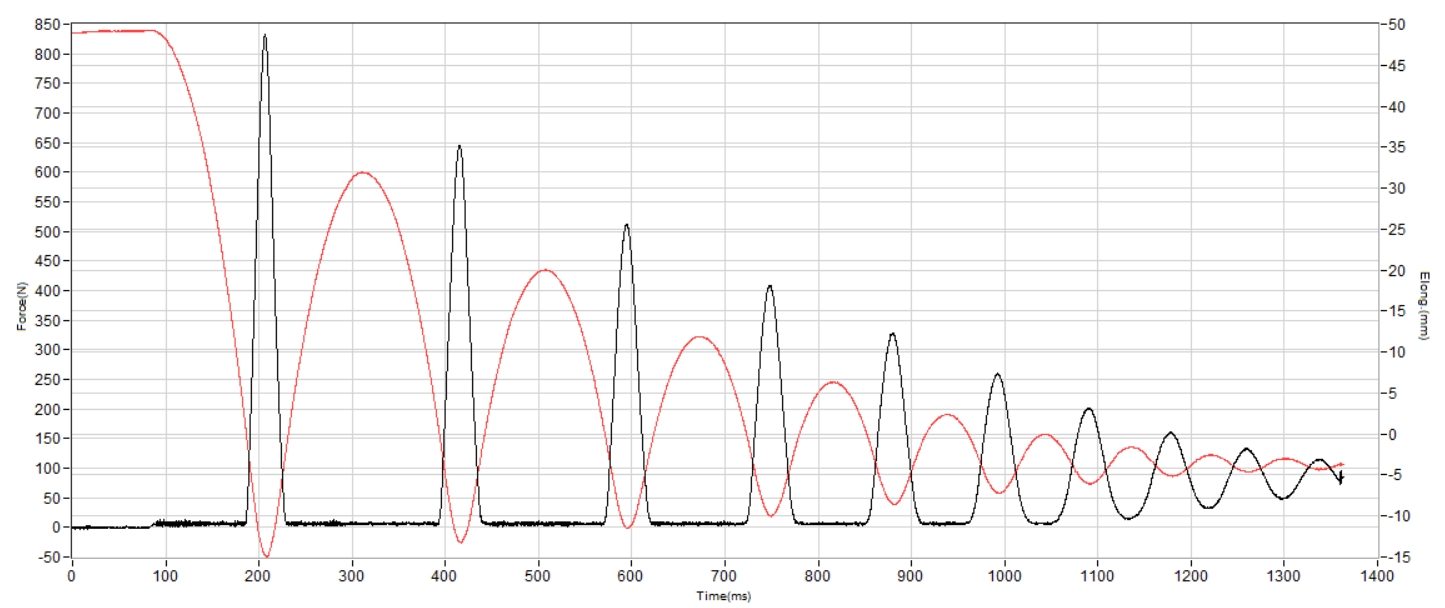
| Tecton X 3 | 139 SA |
| Average | 122 SA |
Energy return
The HOKA Tecton X 3 delivers a bouncy, forward-driving ride—we felt it with every step on the trails. Back in the lab, we confirmed it with a standout 69.9% energy return, which is world-class for a trail running shoe.
| Tecton X 3 | 69.9% |
| Average | 55.6% |
Heel stack
This shoe is built to dominate ultra races, where plush cushioning is essential. Maximising foam underfoot reduces muscle fatigue—especially in the heel, which, even for forefoot strikers, takes a beating in the final miles of long efforts.
That’s why we were thrilled to measure 37.8 mm of heel stack, reinforcing the Tecton X 3 as a superb choice for ultra racing on trails.
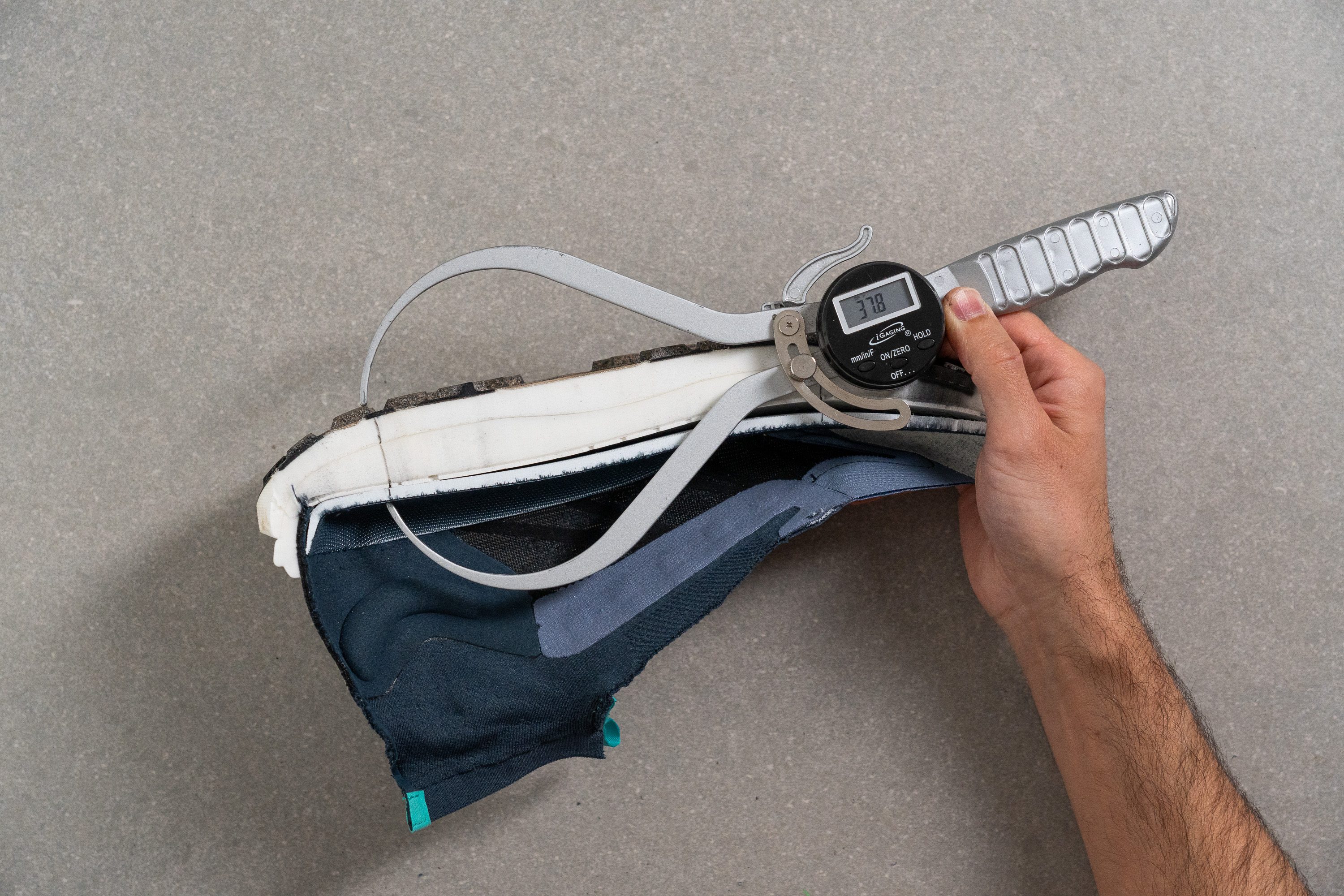
| Tecton X 3 | 37.8 mm |
| Average | 32.6 mm |
Forefoot stack
The forefoot measured 30.9 mm—shorter than HOKA's advertised 35 mm but still more than enough for any runner. And it stands out in impact protection because the foam is the same high-energy PEBA compound found in the Rocket X 2, now making its long-awaited debut in the Tecton series.
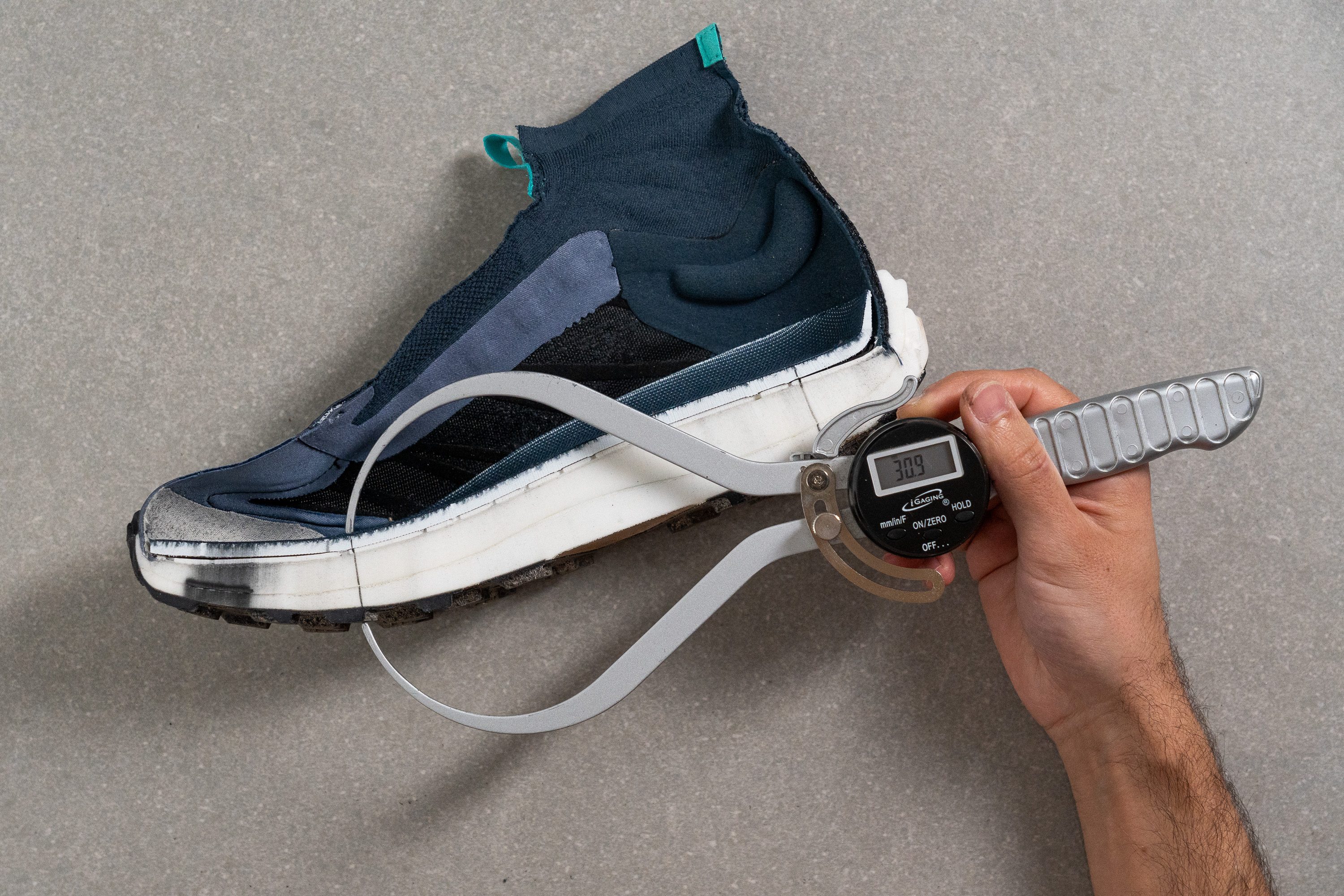
| Tecton X 3 | 30.9 mm |
| Average | 25.1 mm |
Drop
When it comes to drop, we found a familiar pattern with HOKA. We always measure at World Athletics-designated points, and their shoes almost always exceed the advertised offset—often by 2, 3, 4, or even 5 mm. This time, we recorded 6.9 mm instead of the stated 5 mm.
Heel strikers will appreciate this adjustment, as it provides a more forgiving landing compared to the lower offset listed by HOKA.
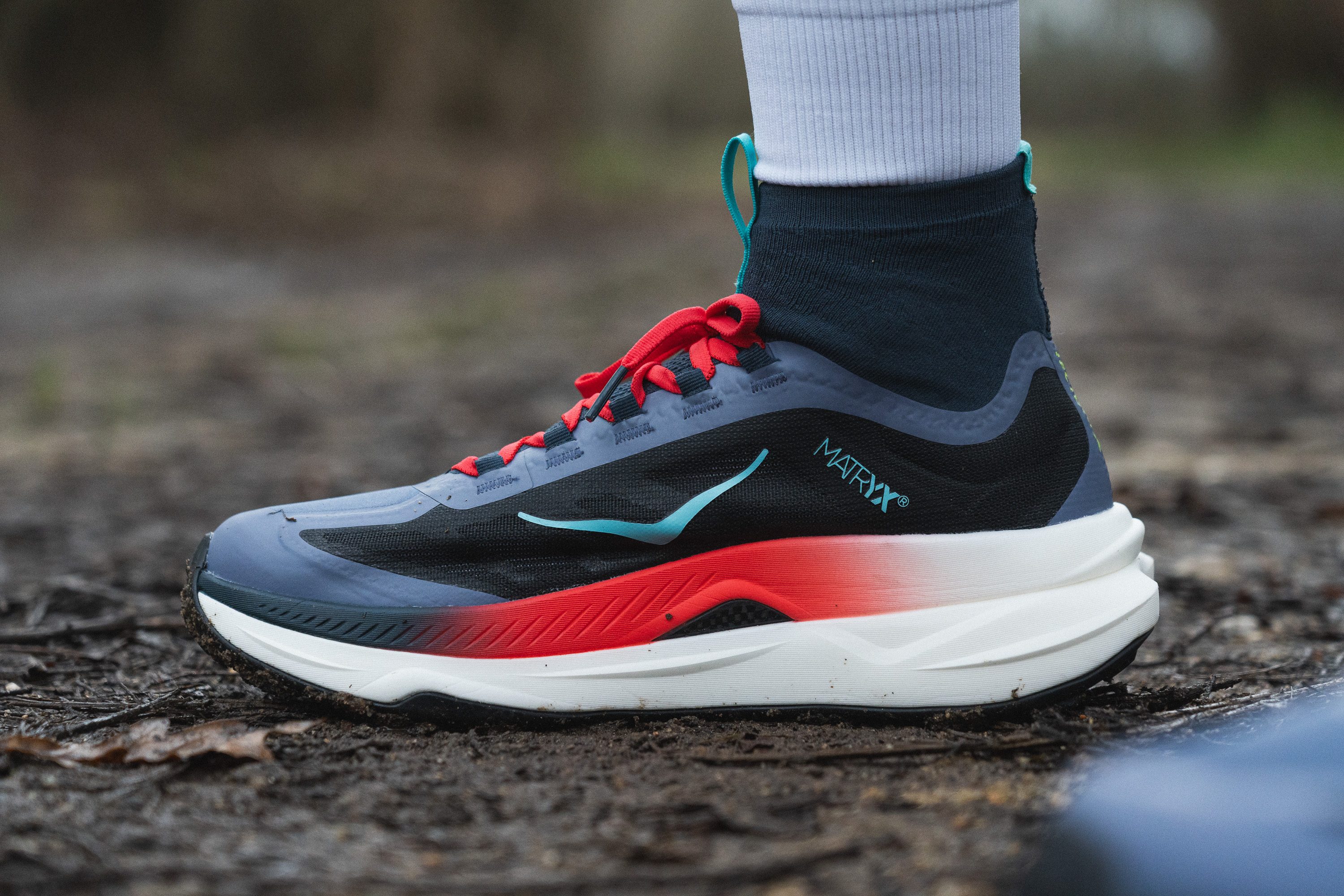
| Tecton X 3 | 6.9 mm |
| Average | 7.5 mm |
Midsole softness
The real highlight of this update is the midsole. In our lab review of the Tecton X 2, we criticised its EVA-based cushioning, and HOKA finally made the switch to an ultra-responsive PEBA midsole in the Tecton X 3. Frankly, asking over £200 for anything less than premium foam would be non sense today’s market.
We discovered that HOKA achieved a good blend of softness and stability, and as expected from any PEBA foam, it delivers exceptional energy return. Our durometer reading of 16.0 HA places it in the sweet spot—plush but not mushy, ideal for running on easy trails.
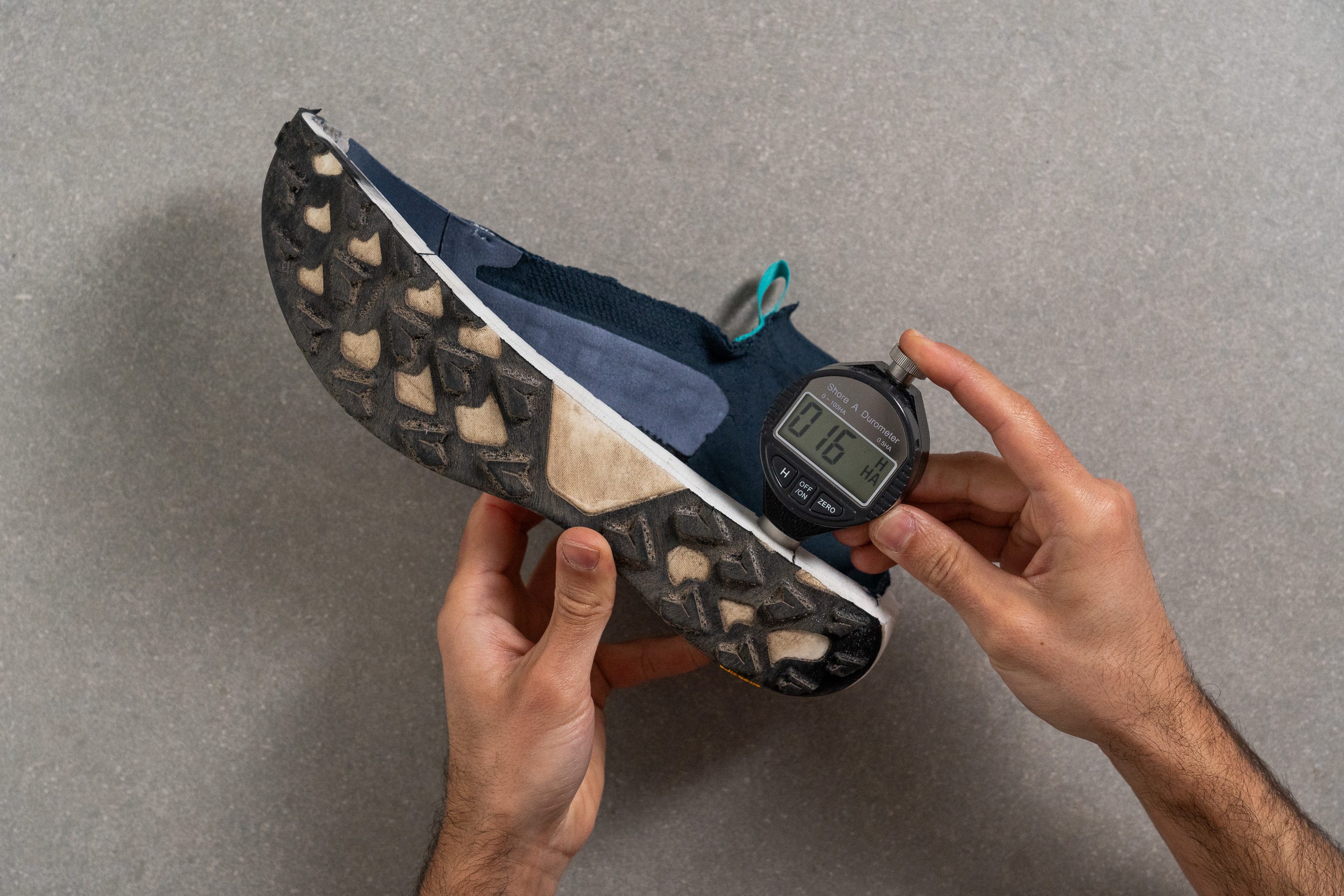
| Tecton X 3 | 16.0 HA |
| Average | 21.9 HA |
Rocker
Coming from HOKA's recent trend of ultra-rockered designs, we feared the same for the Tecton X 3.
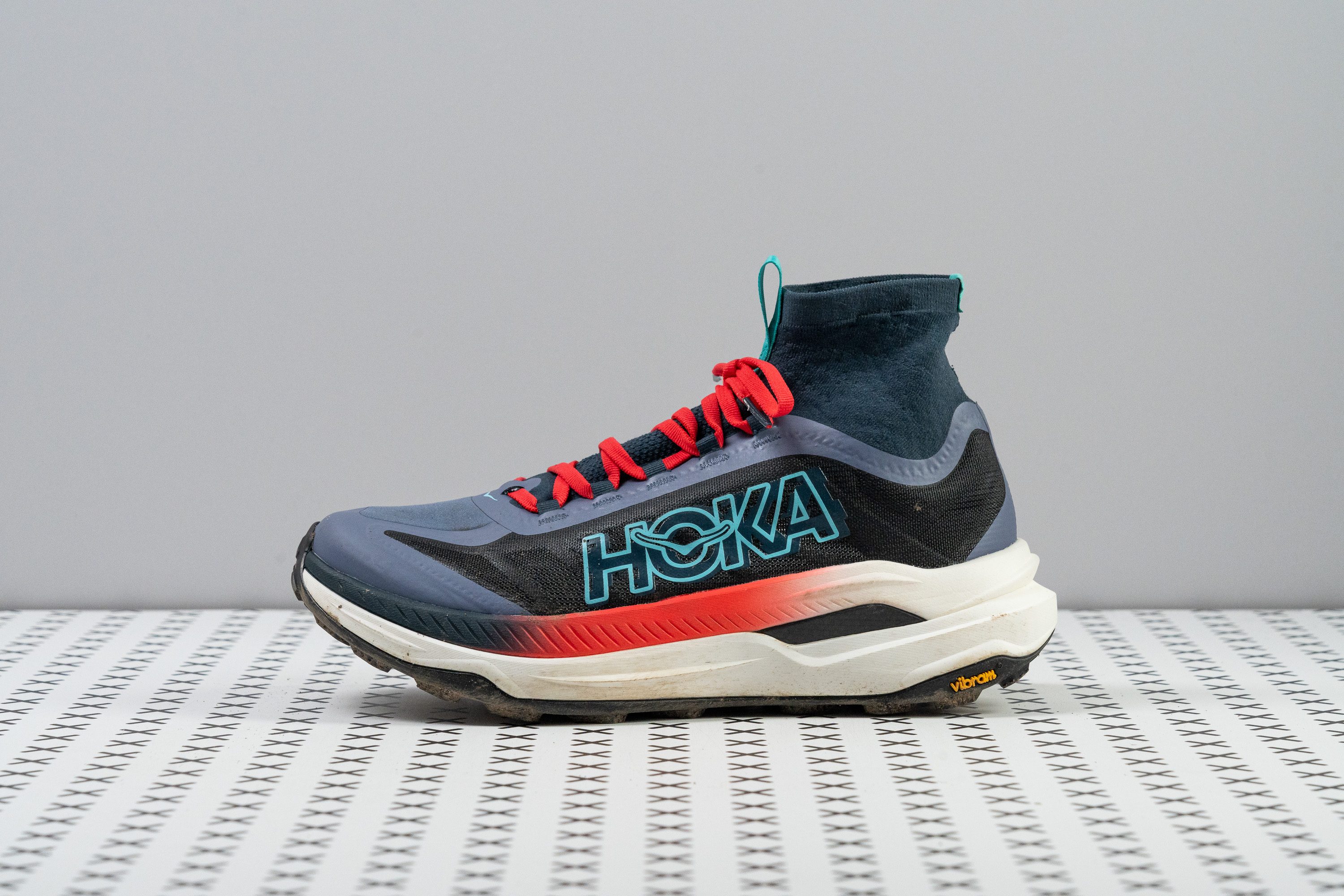
But no—this time, they kept it reasonable, avoiding an exaggerated curvature that, in our experience, tends to cause issues on anything but flat terrain when running on trails.
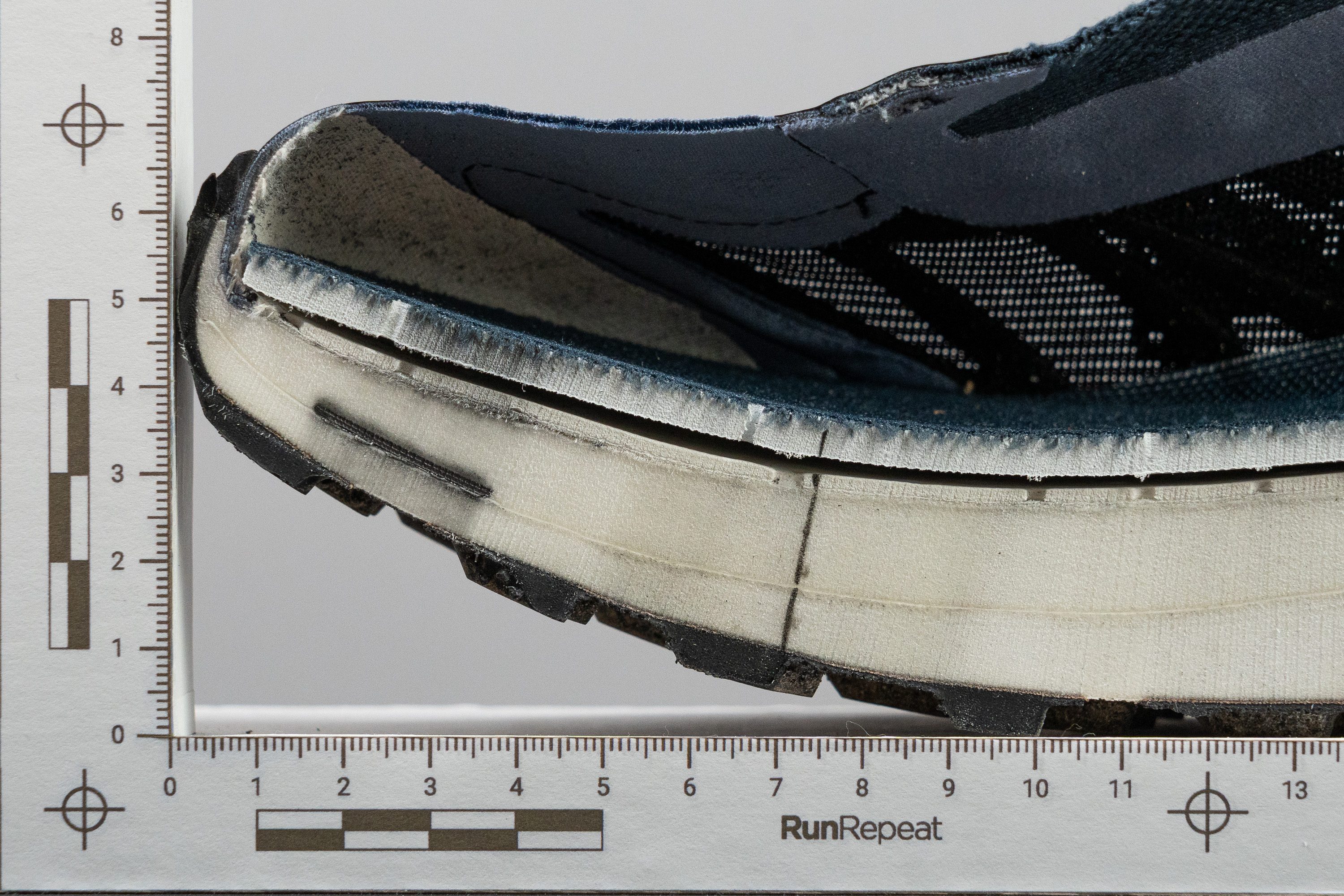
Plate
The Tecton X 3 might as well be called the "Walmsley X 3" in the trail running world—designed almost exclusively to fit Jim Walmsley's needs to conquer the most prestigious races. However, we found that it also borrows high-performance features from HOKA's top-tier road racers.
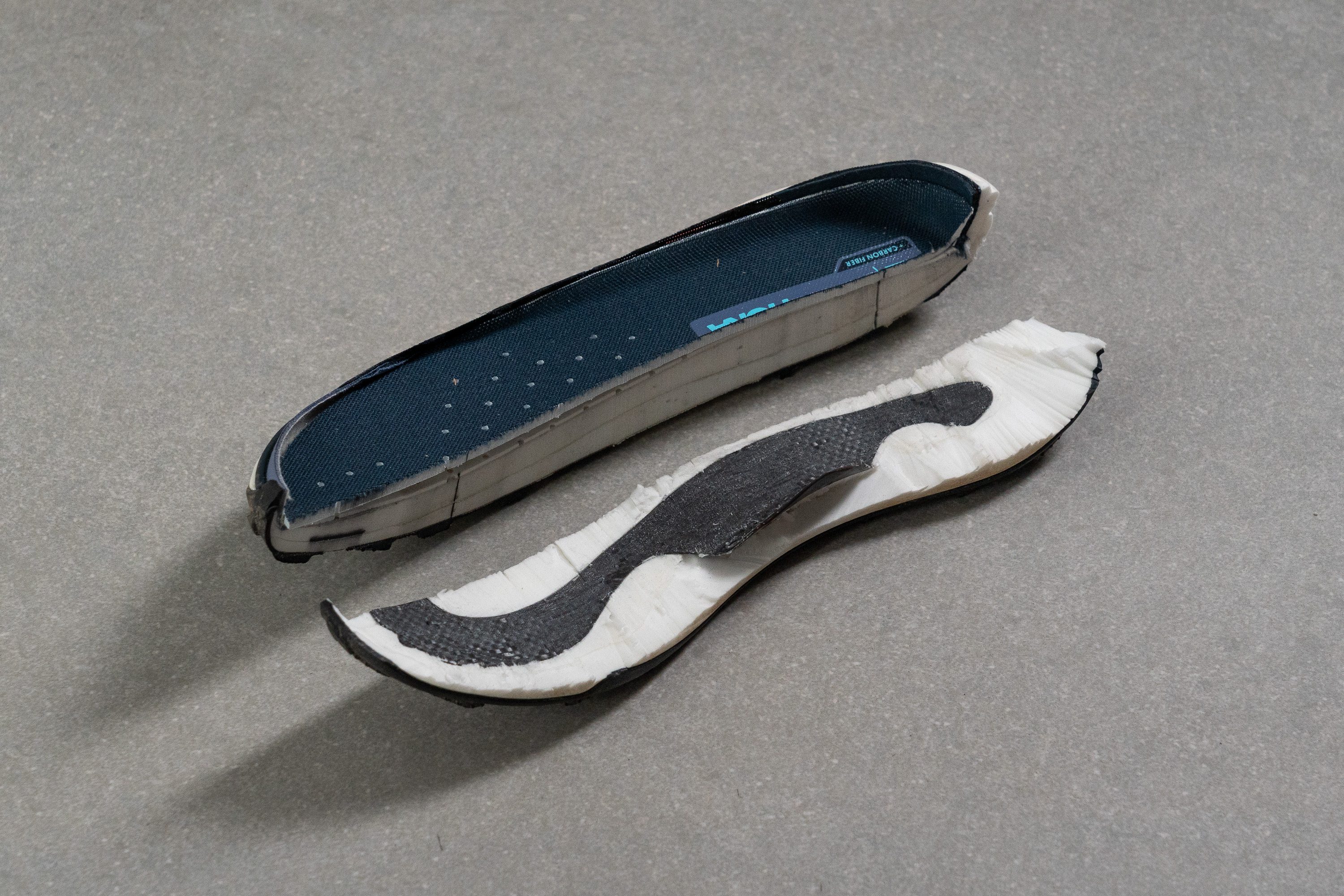
While it retains the signature parallel dual-plate design of its predecessor, Hoka tweaked it with side-stabilising midsole wings for added balance—just like they did with the Cielo X1.
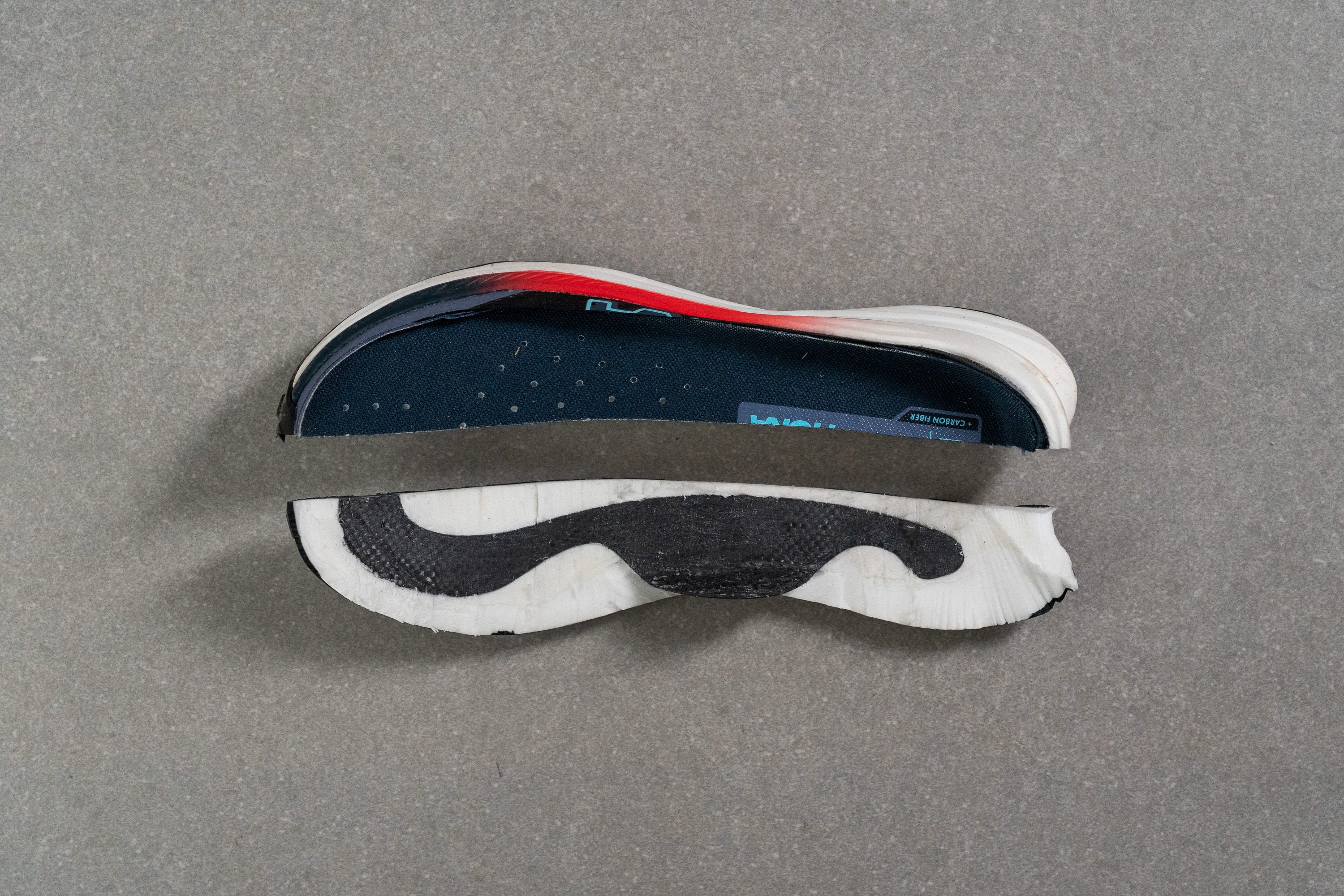
Size and fit
Size
HOKA Tecton X 3 fits slightly small (27 votes).
Width / Fit
HOKA has a reputation for crafting narrow shoes, so we turned to our signature gel test to determine whether the Tecton X 3 continues this trend.
After measuring the widest part at just 92.2 mm, we’re convinced that wide-footed runners won’t be racing with this one. Even those with average-width feet will need to embrace a snug fit.
On the bright side, this streamlined design enhances lockdown—especially on descents—keeping the foot securely in place during fast, technical sections.
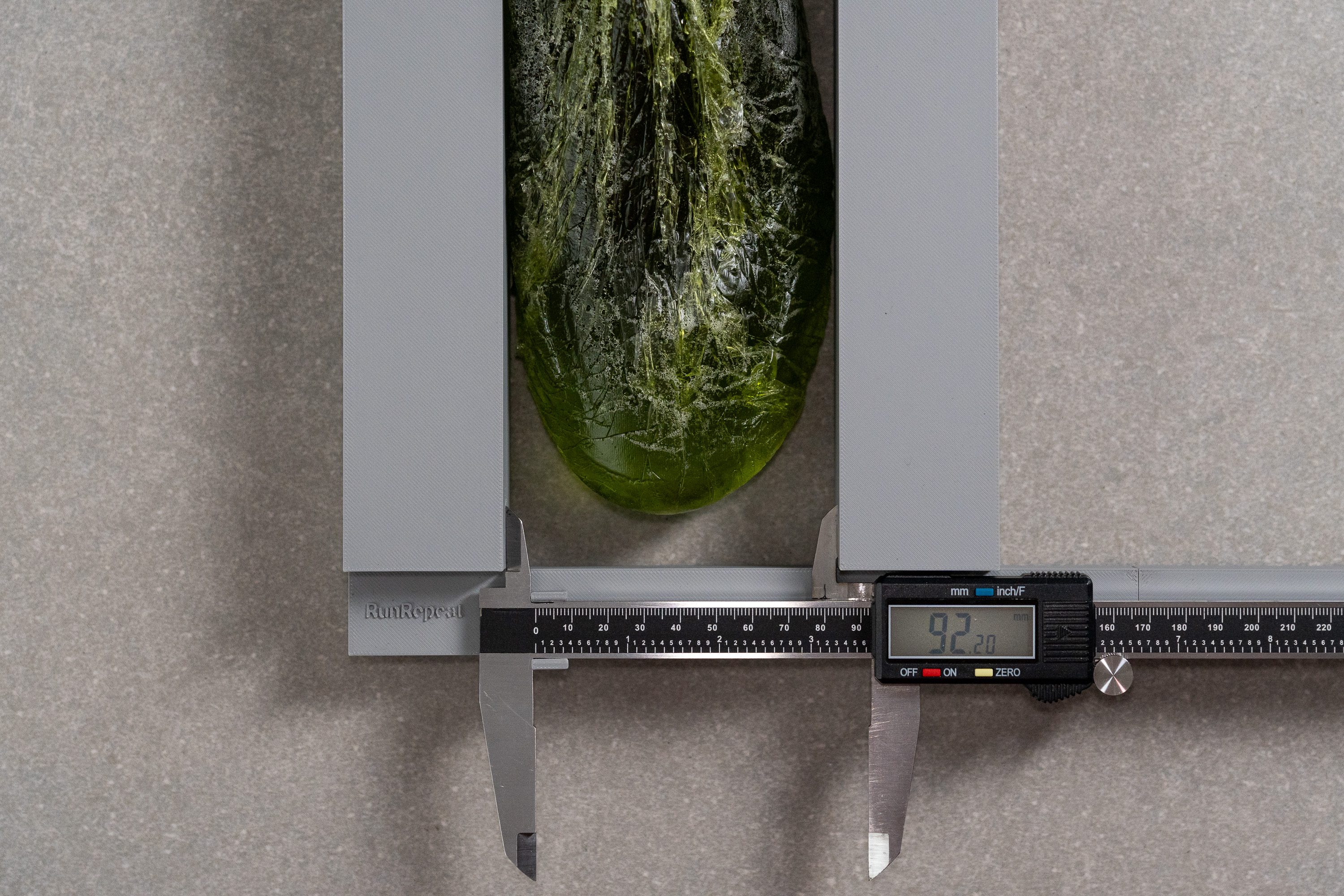
| Tecton X 3 | 92.2 mm |
| Average | 95.7 mm |
Toebox width
After the ultra-narrow shoe width measurement, the toebox offers a slight improvement for those seeking a bit more toe splay, coming in at 73.1 mm.
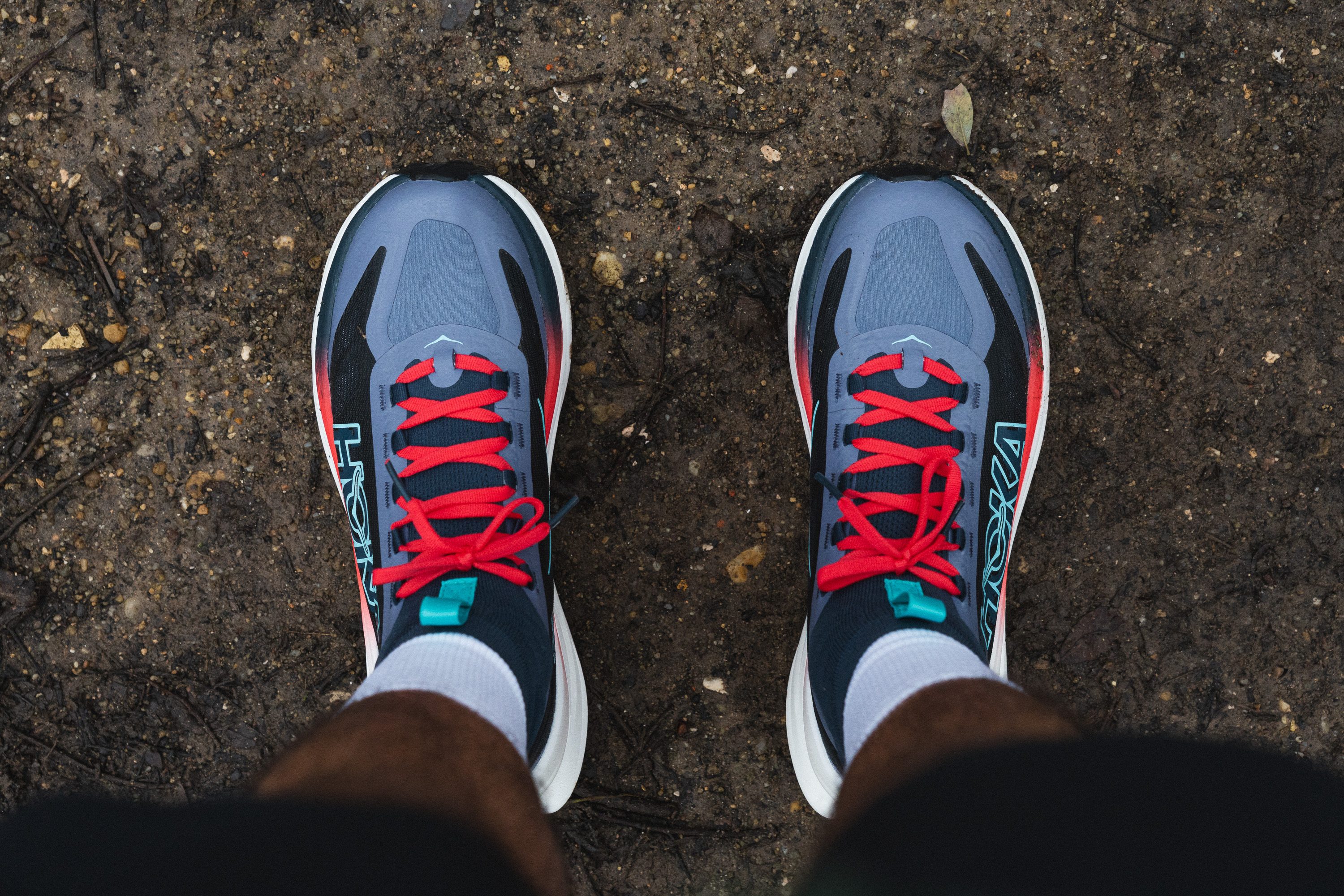
Still, we classify this as a narrow shoe—and as a high-end racer, a 2E option was never on the table. It is what it is—either you embrace the snug fit or look elsewhere.
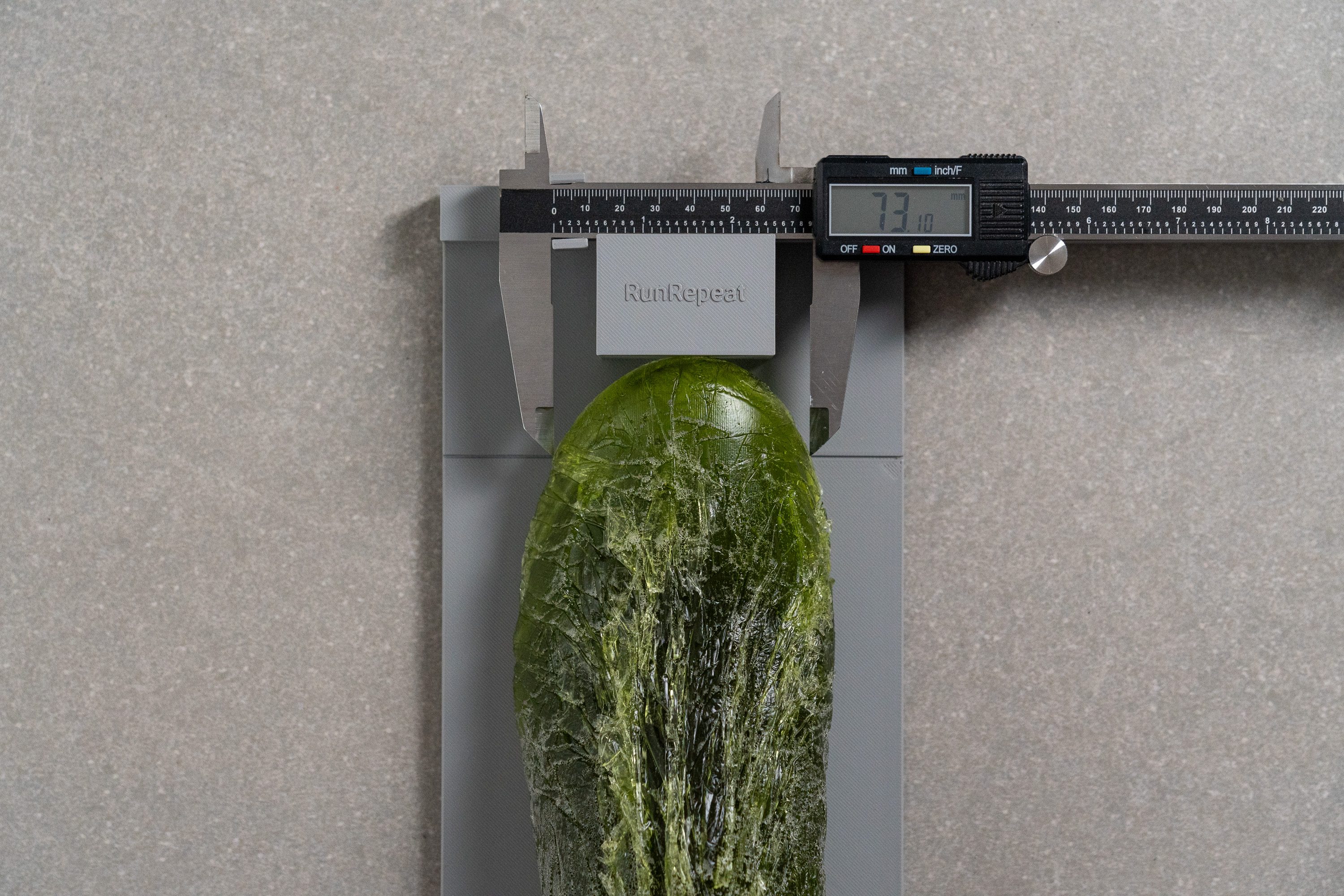
| Tecton X 3 | 73.1 mm |
| Average | 74.7 mm |
Toebox height
When it comes to toebox height, it’s reasonable.
We measured 26.4 mm, which is close to the average and shouldn’t cause issues on the run. In fact, for a speed-focused shoe, excessive vertical space could be more of a drawback than a benefit.
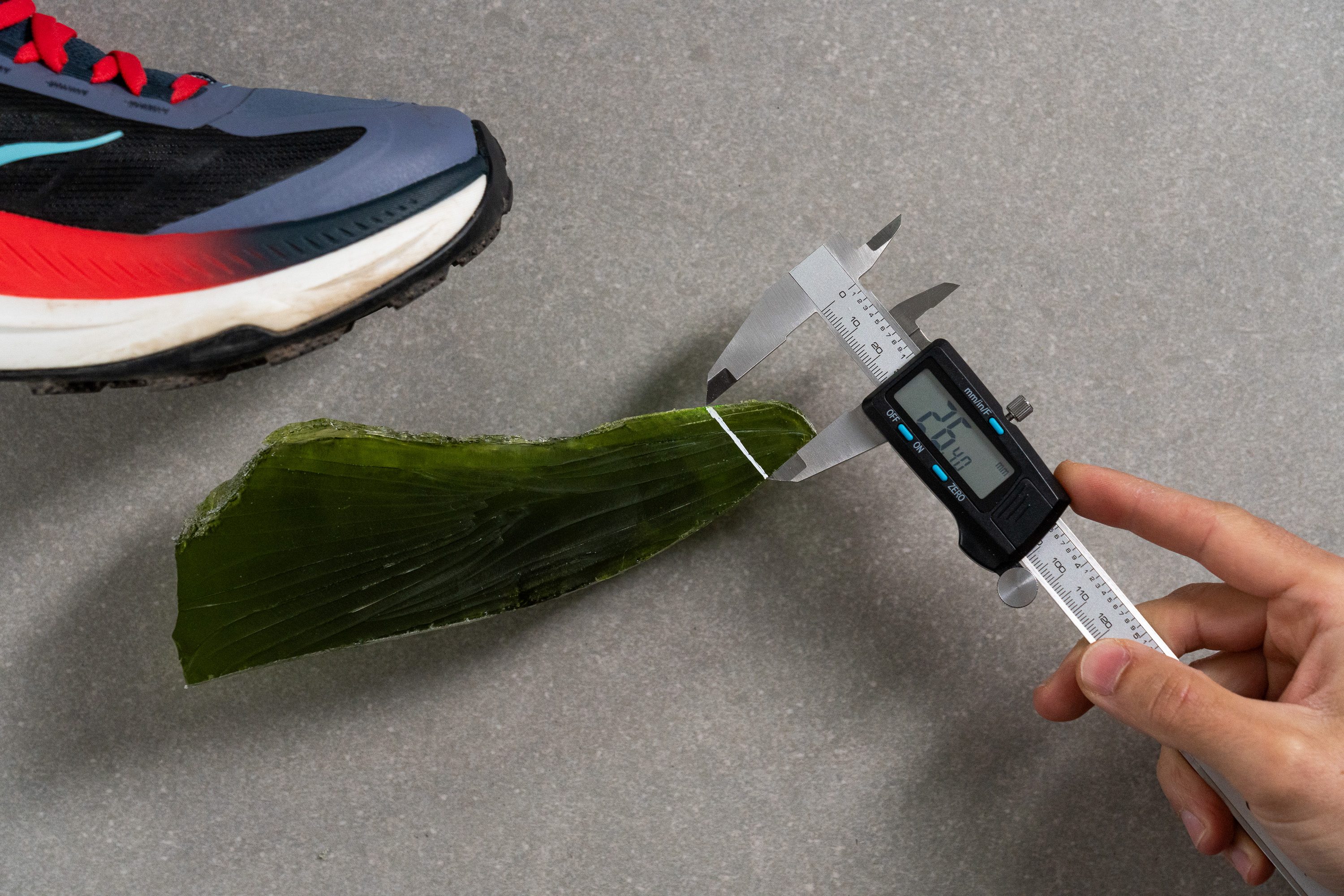
| Tecton X 3 | 26.4 mm |
| Average | 27.1 mm |
Traction / Grip
Forefoot traction
What we really love about the HOKA Tecton X 3 is its premium-quality materials from top to bottom, and the outsole is no exception. Instead of a generic rubber compound, we found the iconic Vibram logo—signalling best-in-class grip and long-lasting durability with its Megagrip Litebase rubber.
We tested with our SATRA TM144 setup and found a 0.53 score. That’s clearly above the average range for trail shoes and offers a confidence-boosting ride on surfaces like compact terrain or gravel, making it a solid choice for demanding ultras.
| Tecton X 3 | |
| Average | 0.60 |
Lug depth
The lugs are well-suited for most ultra-race environments, offering 4.0 mm of depth, which makes the Tecton X 3 a reliable option for easy and moderately technical terrain. This setup balances grip and efficiency without adding unnecessary weight.
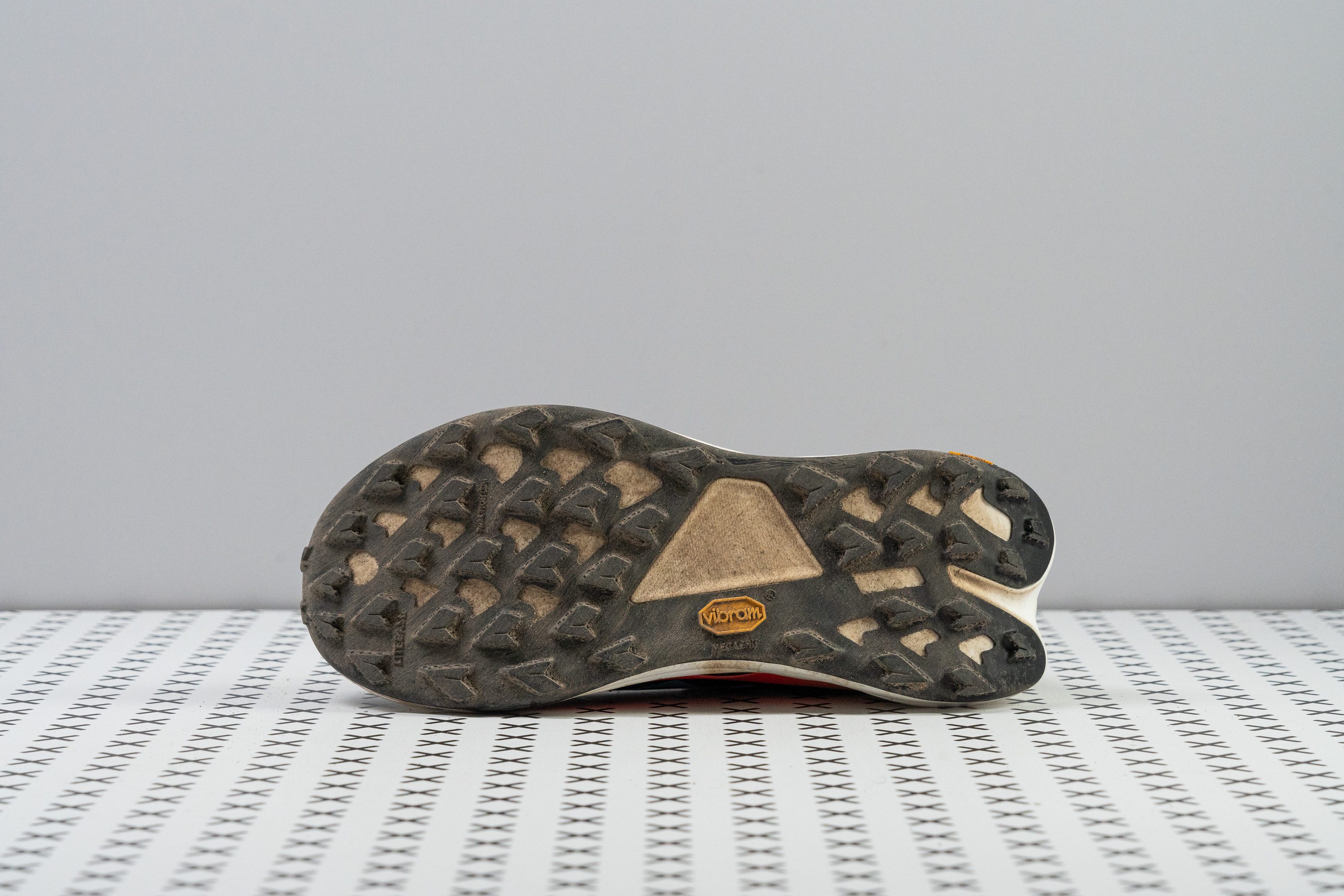
We discovered that HOKA made slight design tweaks to the lugs, incorporating an asymmetric chevron shape along with Vibram’s "Traction Lug" technology. This includes textured edges that enhance grip even further, improving traction beyond what we experienced in previous iterations.
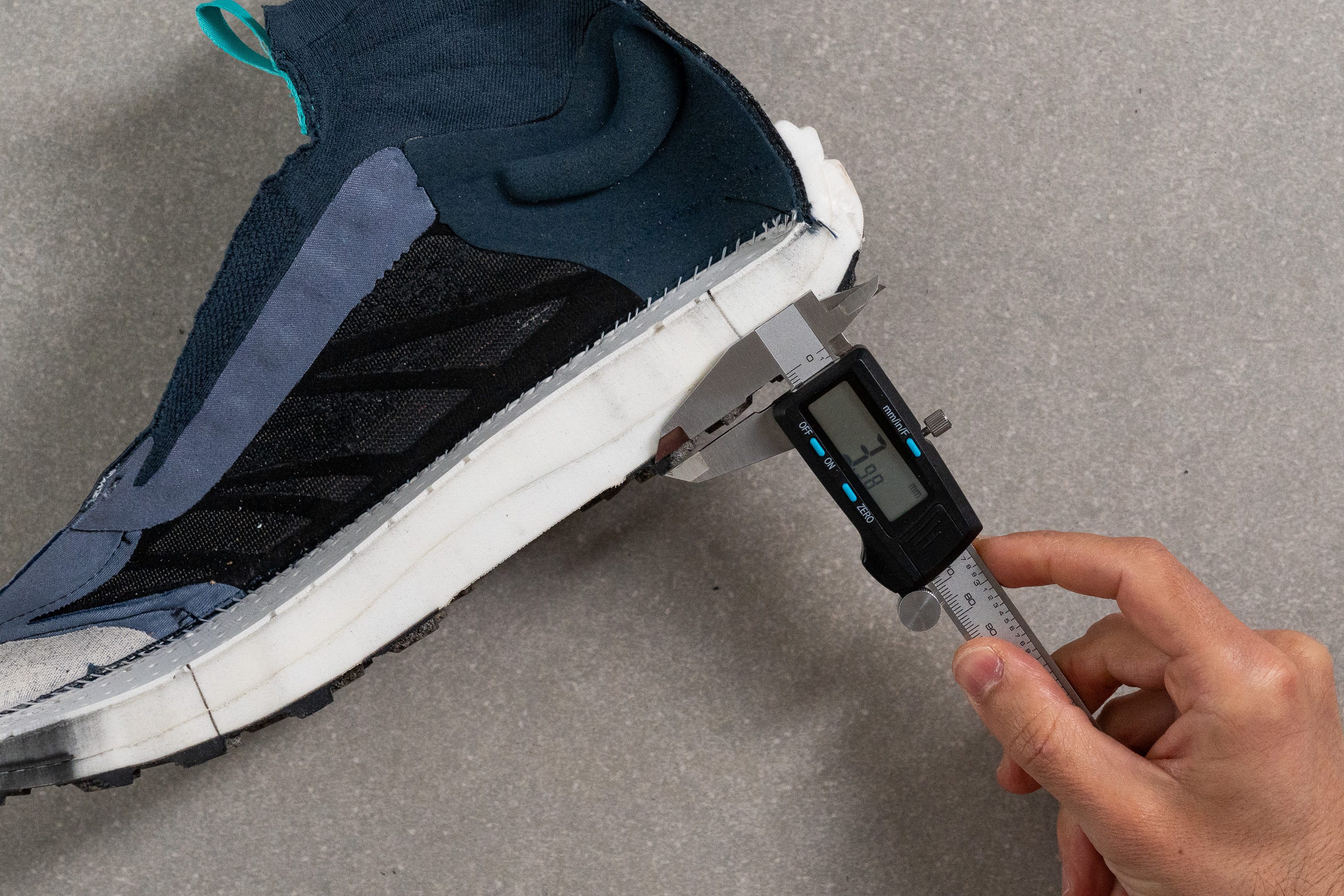
| Tecton X 3 | 4.0 mm |
| Average | 3.5 mm |
Outsole design
The outsole of the Tecton X 3 showcases a uniquely lightweight-focused design. Strategic cutouts through the outsole expose the midsole foam and reduce material even further. These voids are placed between lugs and away from high-impact zones to avoid compromising durability while enhancing flexibility and shedding unnecessary grams.
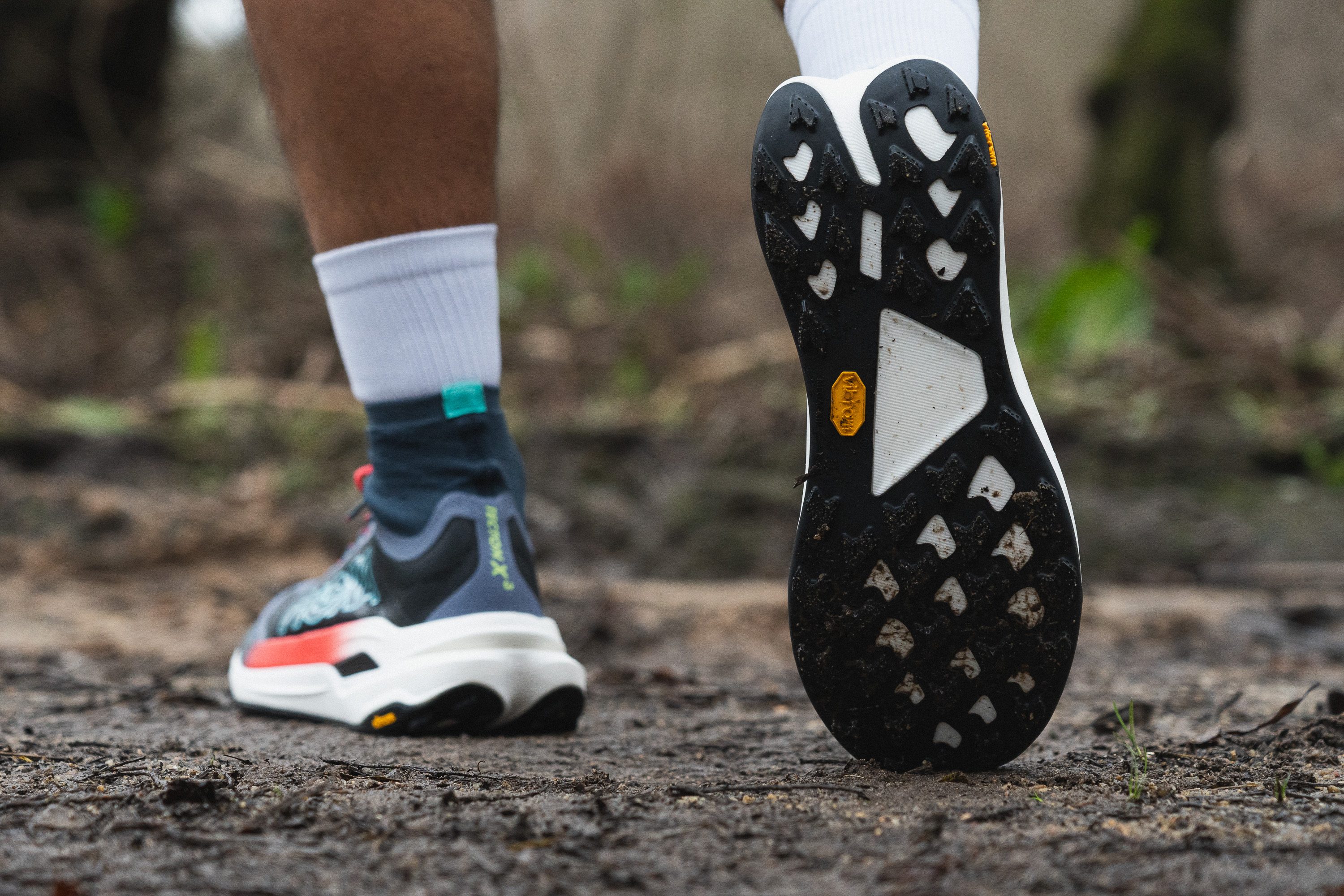
Flexibility / Stiffness
We expected an ultra-stiff result in our bending test, especially since it felt as rigid as steel on the run. And the Tecton X 3 surprised us measuring a modest 18.9N, close to the average stiffness for trail running shoes without carbon plates.
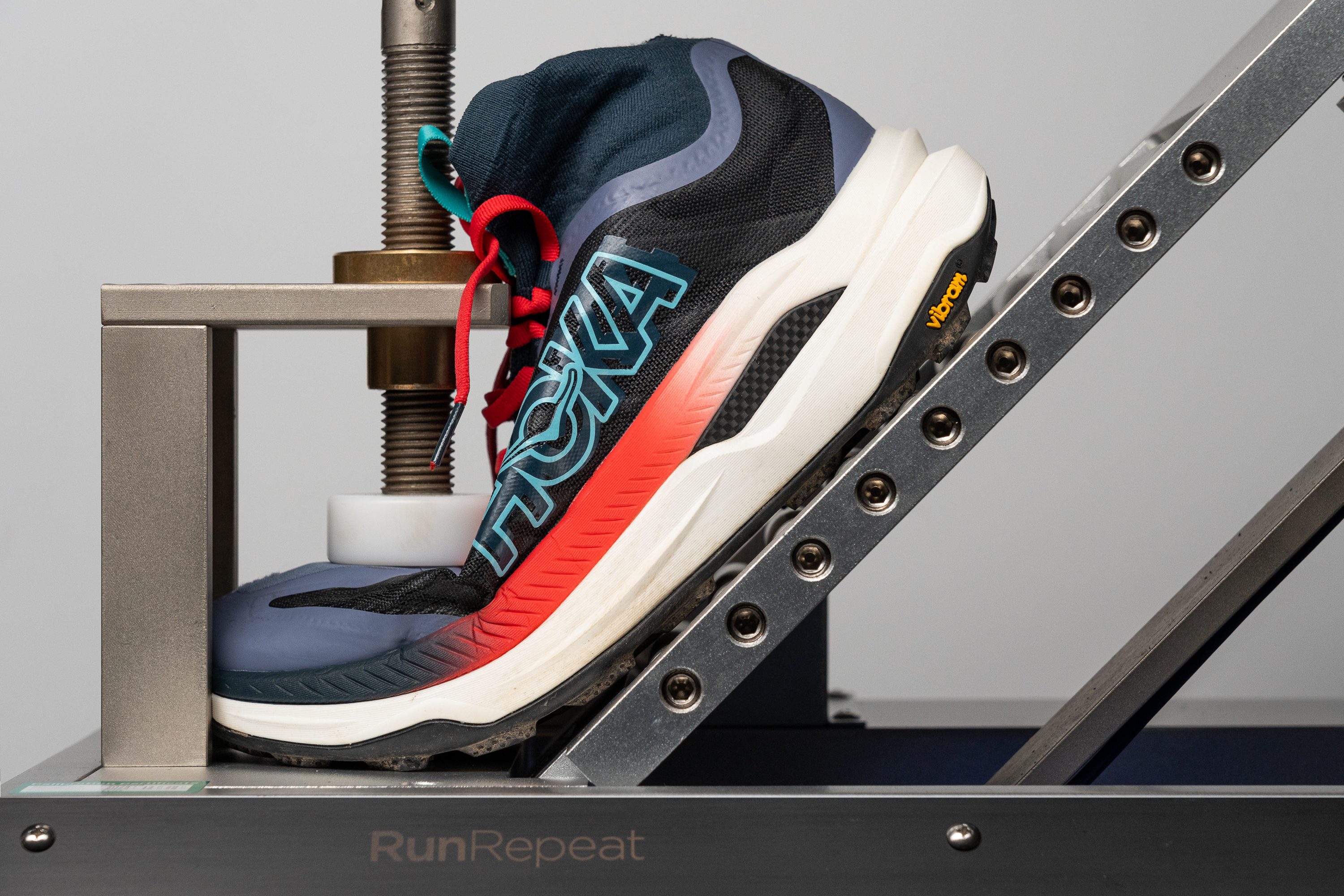
| Tecton X 3 | 18.9N |
| Average | 14.6N |
Weight
For us, the biggest downside of v3 is weight. Despite switching from EVA to PEBA, HOKA couldn’t manage to shed any grammes—in fact, it’s heavier. It jumps from 9.05 oz (257g) to 9.7 oz (275g).
Likely not a deal-breaker for anyone, but definitely a step back.
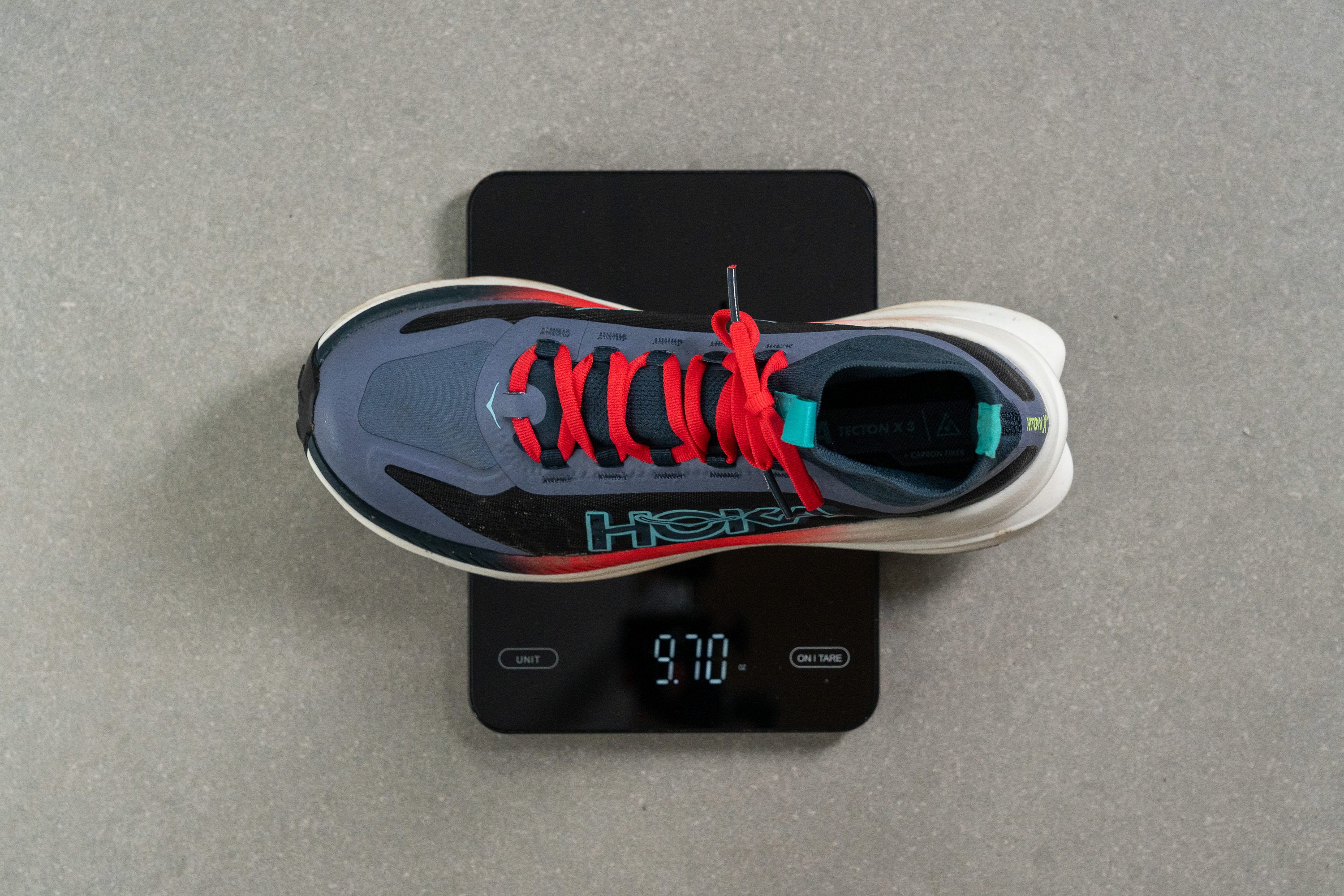
| Tecton X 3 | 9.7 oz (275g) |
| Average | 10.2 oz (289g) |
Breathability
One of the standout features of the Tecton X 3 is its MATRYX upper, a material that, on paper, blends durability and breathability in a way few others can. Naturally, we put it to the test here in the lab to see if it lives up to the hype.
Hooking up our smoke machine, we measured airflow and found it offers decent ventilation, earning a 3/5 rating. While this might fall short for road racers, it’s actually good for a rugged trail shoe, where protection clearly take priority over maximum airflow.
Shining a light through the upper, we uncovered its carefully engineered design. Thin MATRYX sections balance breathability, while substantial TPU reinforcements ensure longevity. In our view, HOKA could have pushed this upper to a 4/5 or even a 5/5 by reducing protective layers, but we believe that trade-off wouldn’t be ideal.
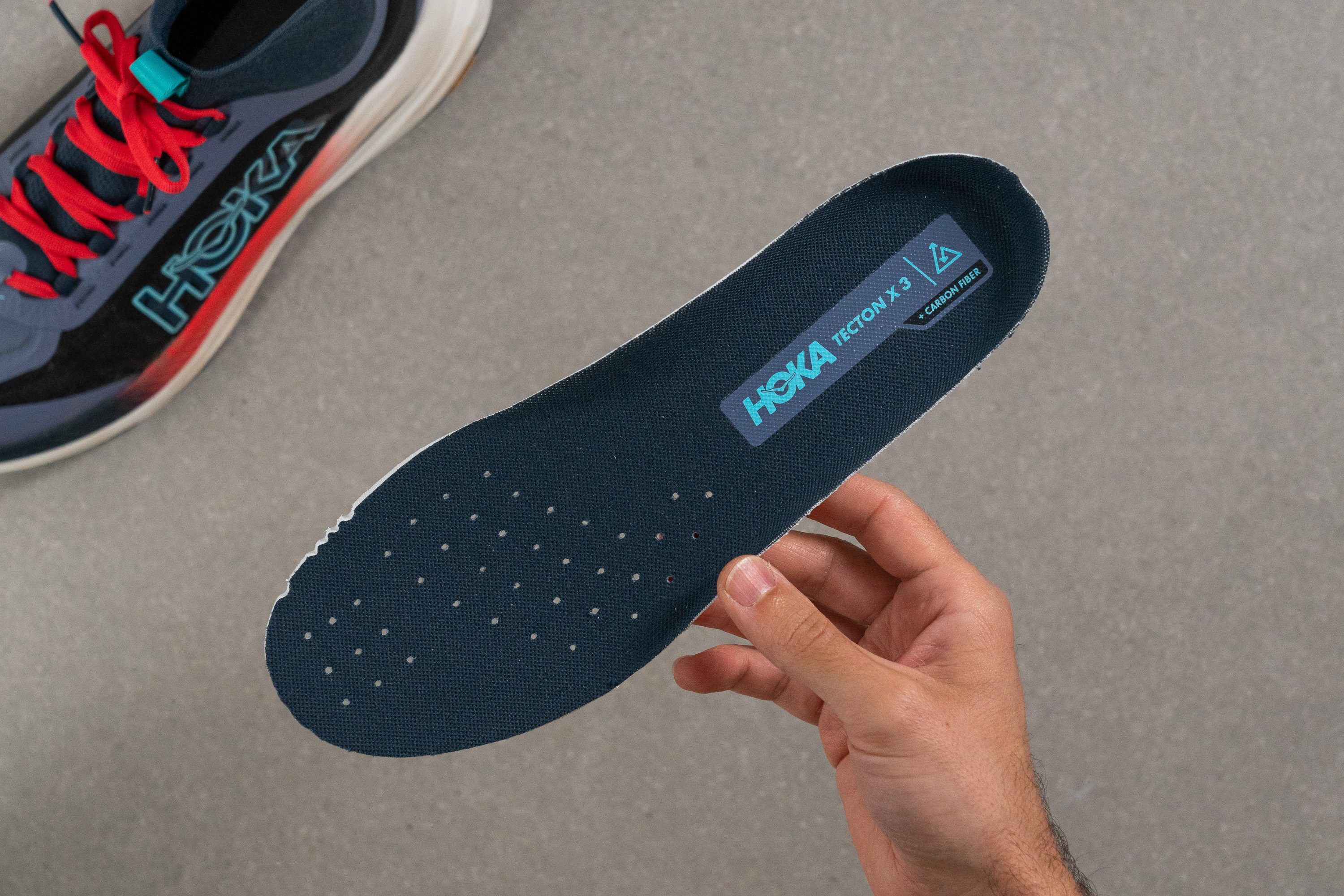
We were pleased to discover that the insole is perforated—a small yet essential detail at this premium price point, but one that not all brands bother to include.
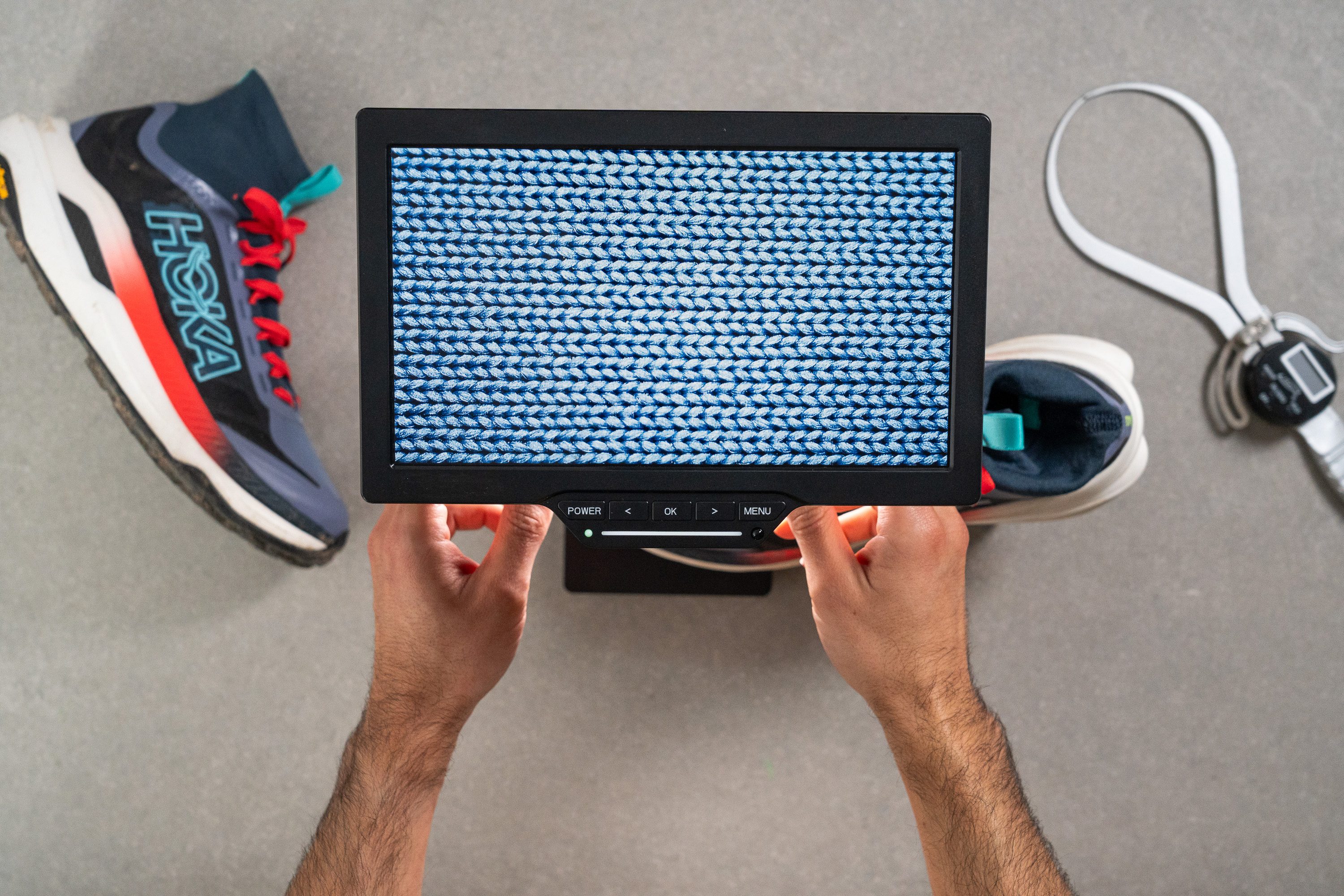
A closer look under our microscope revealed that there are no dedicated ventilation holes.
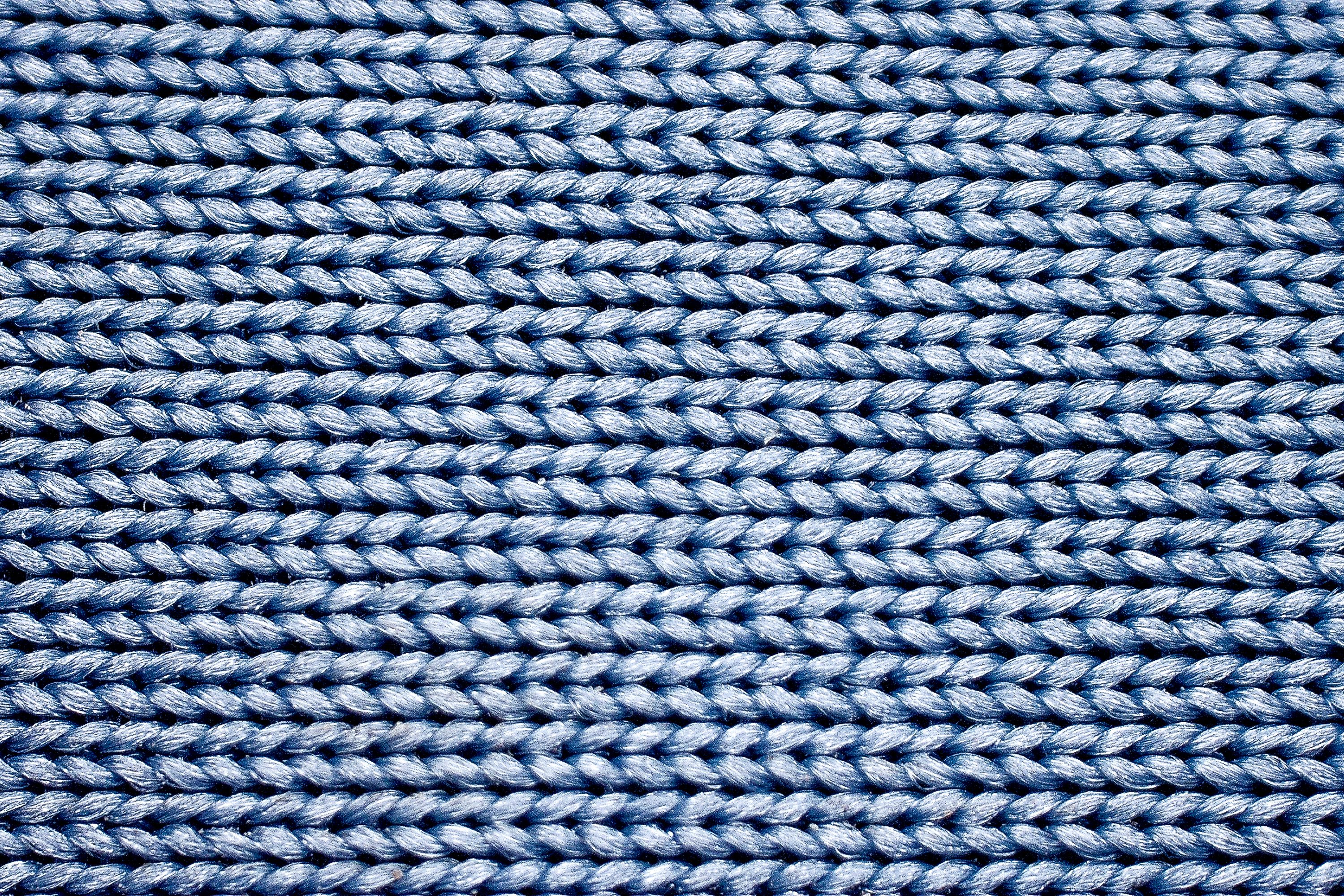
Instead, air escapes through minuscule gaps between the tightly woven fibres. This construction boosts durability while still allowing for some airflow, even if it’s not the most breathable option.
That said, MATRYX is a premium-and-pricey material, and HOKA didn’t just use it—they made sure it stands out. Oh, and it’s water-repellent, a huge bonus for runners tackling wet or unpredictable race conditions.
| Tecton X 3 | 3 |
| Average | 3.2 |
Stability
Lateral stability test
While the midsole is undoubtedly the standout upgrade in the Tecton X 3, stability also sees a solid improvement. HOKA ensured this version feels more grounded than its predecessors by expanding the landing platform and adding supportive wings to the dual carbon plates, among other tweaks.
Torsional rigidity
Despite packing two carbon plates in parallel instead of one to improve flexibility (think of a single plate just cut in half) we found superior stiffness in the Tecton X 3, and it earned—like most carbon-plated shoes—a max score of 5/5.
| Tecton X 3 | 5 |
| Average | 3.6 |
Heel counter stiffness
In our testing, we found that the Tecton X 3’s heel counter mirrors that of a road supershoe—ultra-minimal and highly-flexible, offering almost no structure or support. It scored a 1/5 in our lab, making it a dream for those craving a race-day feel.
| Tecton X 3 | 1 |
| Average | 3 |
Midsole width - forefoot
The forefoot is remarkably wide at 117.0 mm—a major shift from HOKA’s other trail racer, the Zinal 2, which prioritises agility for shorter races. Here, HOKA sacrifices nimbleness for a stability-focused design, making it a better fit for flatter, less technical trails.
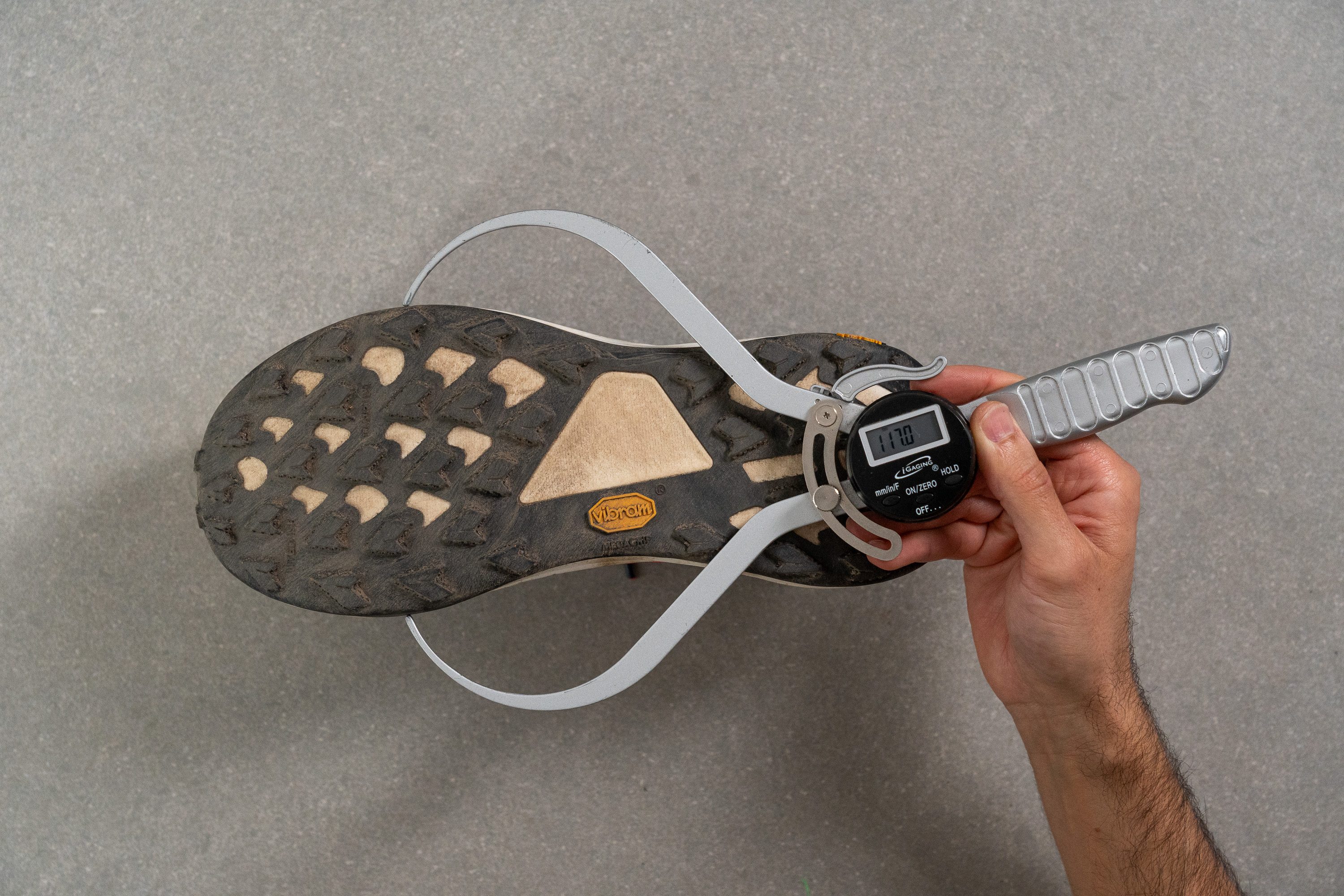
| Tecton X 3 | 117.0 mm |
| Average | 112.8 mm |
Midsole width - heel
In our testing, we found that the ultra-flexible heel counter slightly compromises stability for rearfoot strikers, but HOKA countered this with a notably-wide 96.5 mm heel.
Seems that Jim Walmsley pushed for a trail supershoe with ultra-stable landings to handle the final miles when muscle fatigue takes its toll...
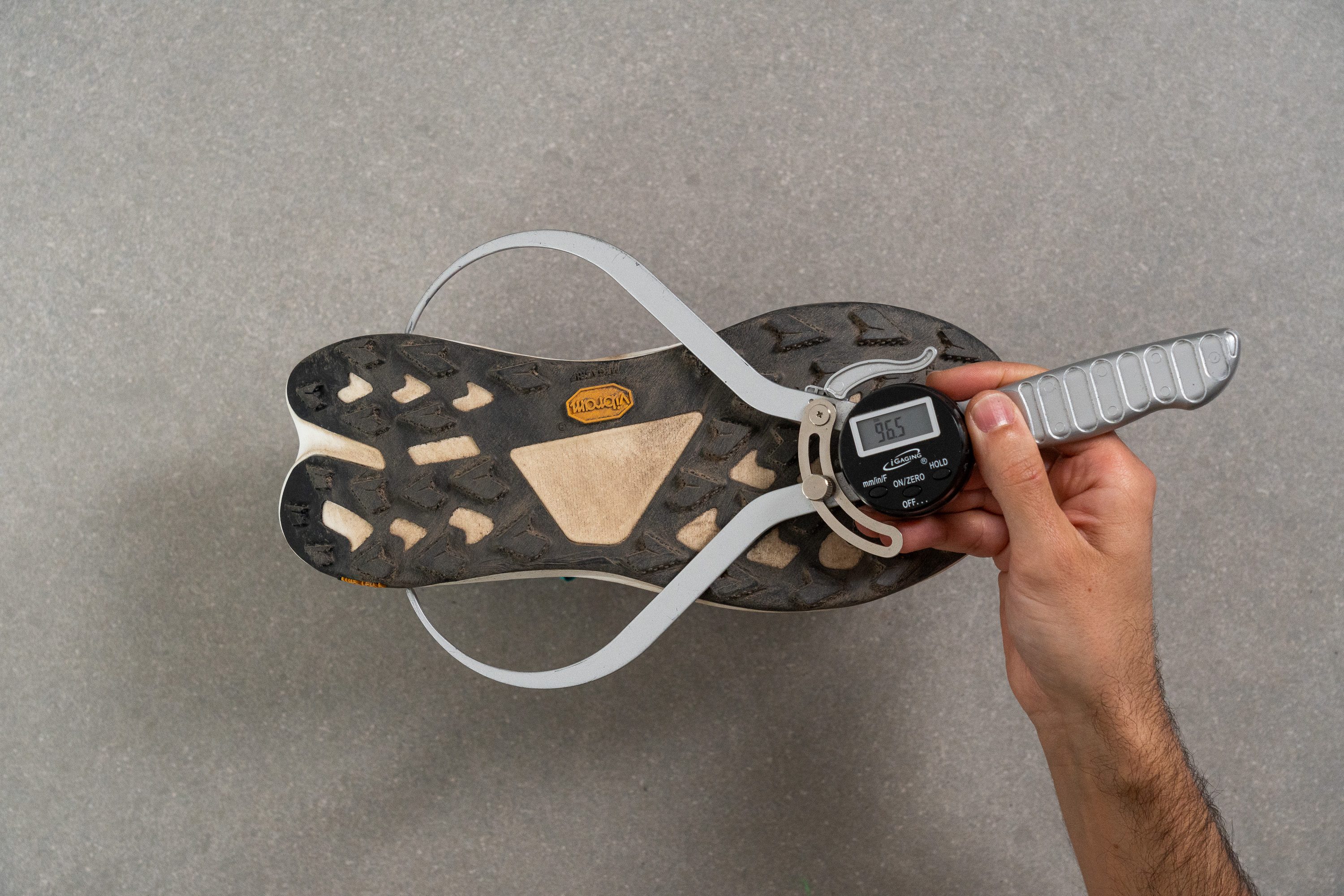
| Tecton X 3 | 96.5 mm |
| Average | 89.9 mm |
Durability
Toebox durability
As we mentioned, MATRYX is designed to strike a balance between breathability and durability—and based on our findings, it delivers. When we put the upper through our Dremel test, it scored an impressive 4/5, a standout result for any running shoe.
| Tecton X 3 | 4 |
| Average | 3.1 |
Heel padding durability
The heel padding performed reasonably well, securing a 3/5—far from exceptional but certainly sufficient for this shoe. With its race-ready design, we don’t anticipate runners wearing this area out too quickly.
| Tecton X 3 | 3 |
| Average | 3 |
Outsole hardness
In terms of traction, we found it quite solid, with increased outsole coverage compared to its predecessor. However, HOKA retained several cutouts to shave off as much weight as possible. As expected, hardness is on the higher end, measuring 88.0 HC in our lab tests.
| Tecton X 3 | 88.0 HC |
| Average | 85.8 HC |
Outsole durability
When it comes to durability, Vibram consistently delivers, and our test confirmed it once again. We measured just 0.5 mm of wear—an outstanding result.
Based on our findings, any durability concerns would likely arise only in the exposed foam areas.
| Tecton X 3 | 0.5 mm |
| Average | 0.9 mm |
Outsole thickness
The outsole is thicker than we anticipated for a racer, measuring 2.0 mm. HOKA might consider shaving it down slightly in the Tecton X 4 to trim some weight.
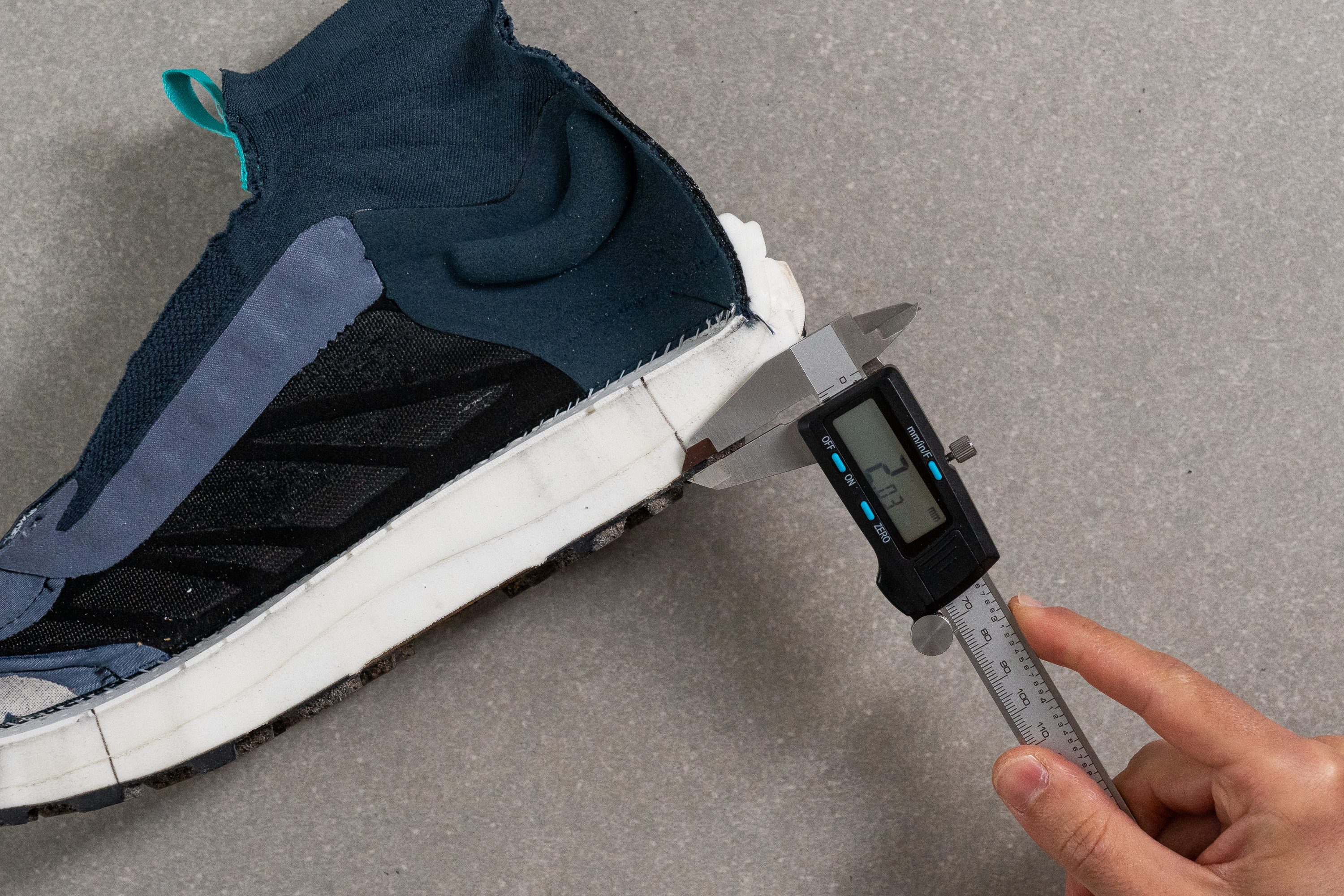
| Tecton X 3 | 2.0 mm |
| Average | 2.2 mm |
Misc
Insole thickness
The insole of the Tecton X 3 feels average for a trail shoe but a bit thick for a racer at 4.6 mm.
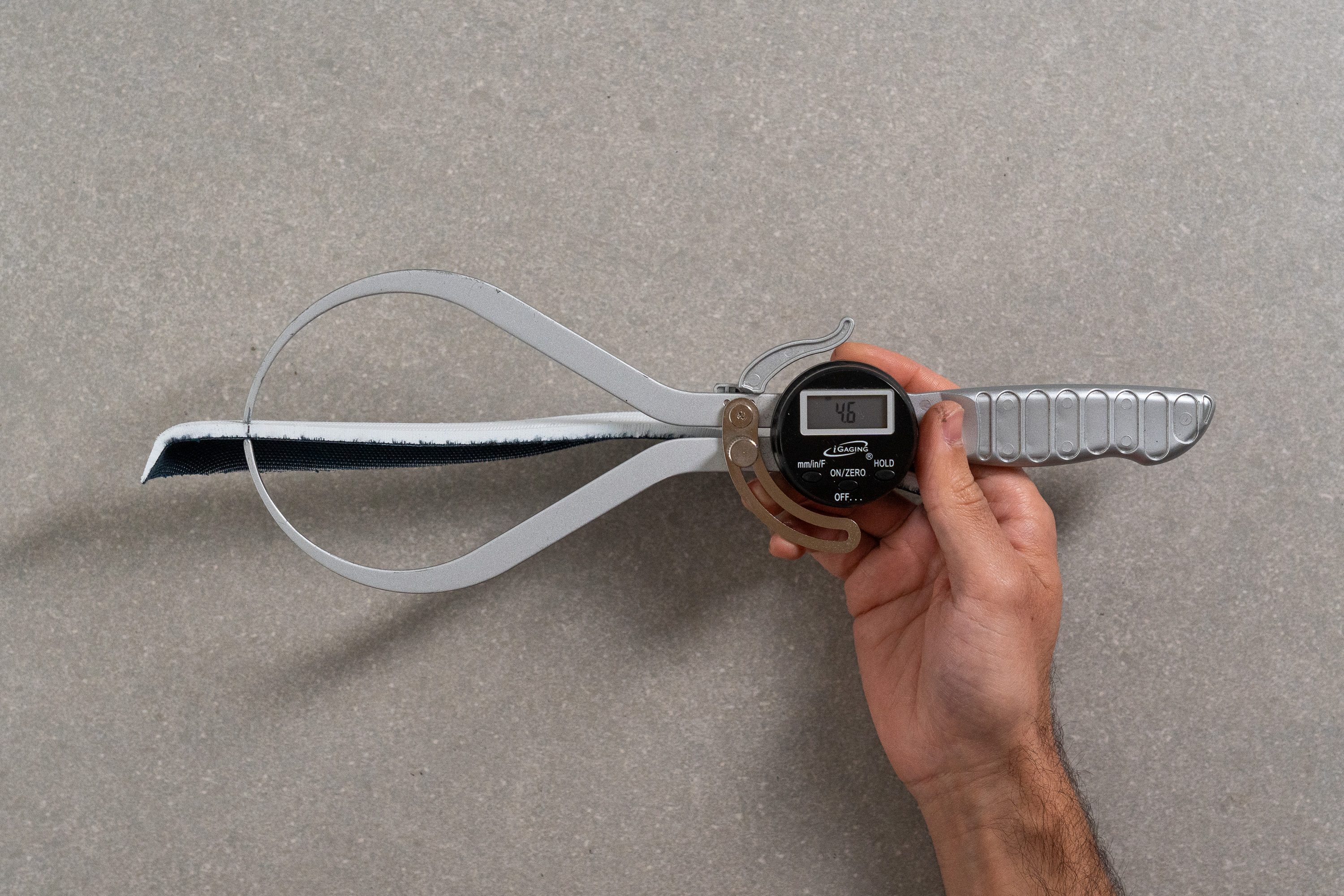
| Tecton X 3 | 4.6 mm |
| Average | 4.7 mm |
Removable insole
Hoka went all-in with this shoe, even incorporating Durapontex foam for the insole—undoubtedly contributing to the Tecton X 3’s retail price. However, if you prefer a more traditional insole without the flared heel, this one is fully removable.
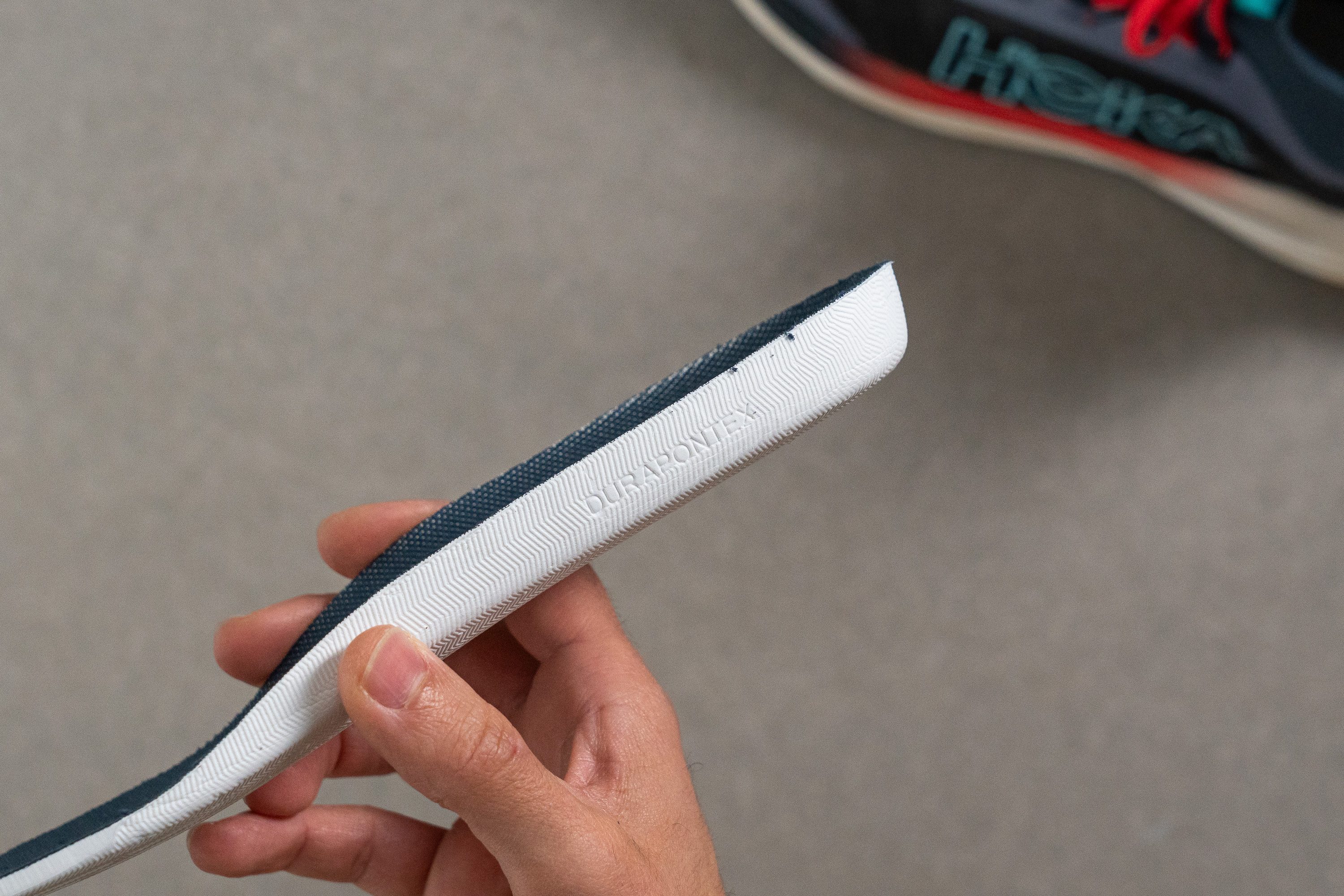
| Tecton X 3 | Yes |
Midsole softness in cold (%)
We gave the Tecton X 3 a quick 20-minute Spanish-style nap in the freezer (though a real siesta would be longer), and it returned 22% firmer. Not a bad result, but we expected better from a PEBA midsole.
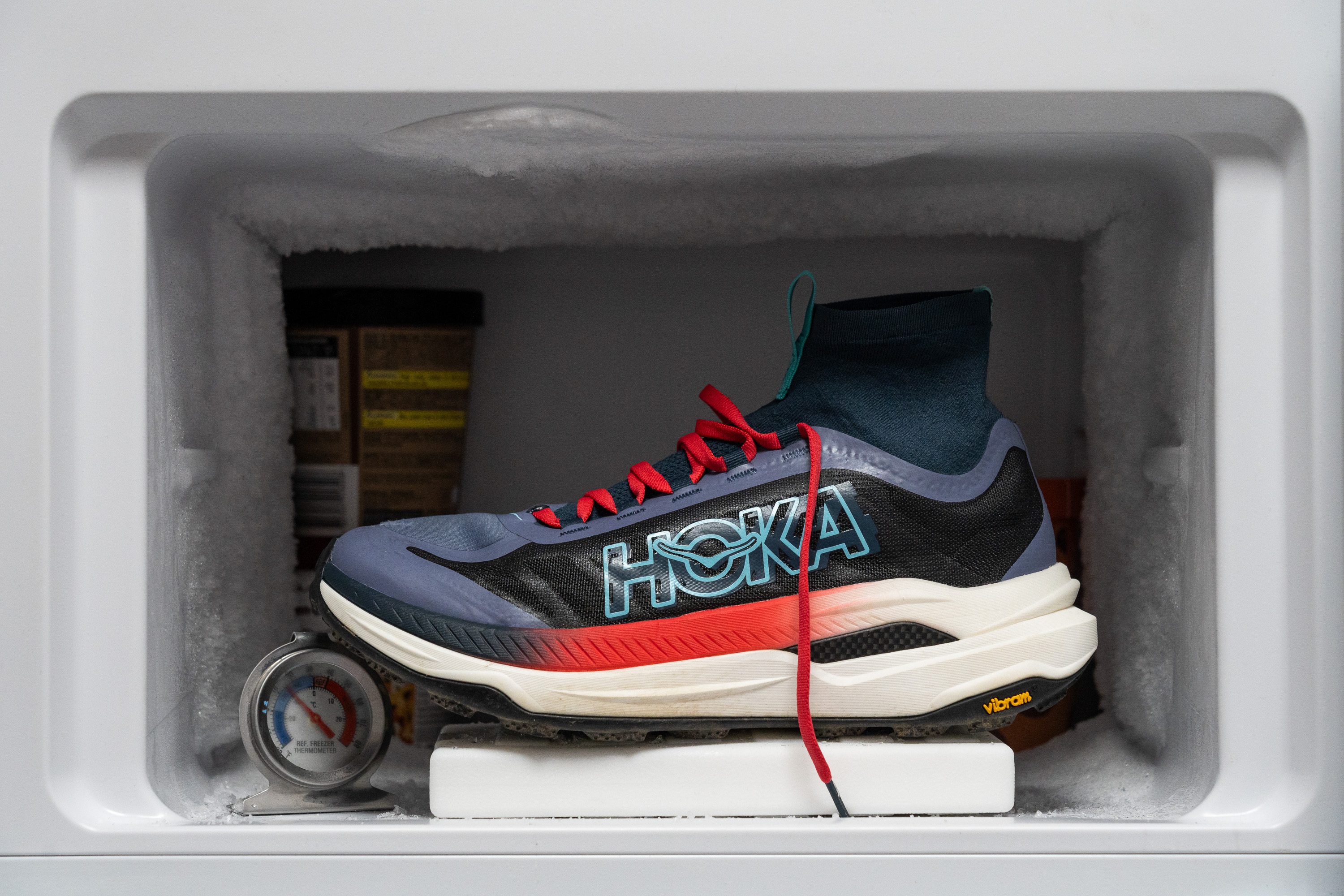
| Tecton X 3 | 22% |
| Average | 26% |
Reflective elements
We would’ve loved to see some reflective details on the upper—especially for ultra races with night segments—but Hoka had other plans.
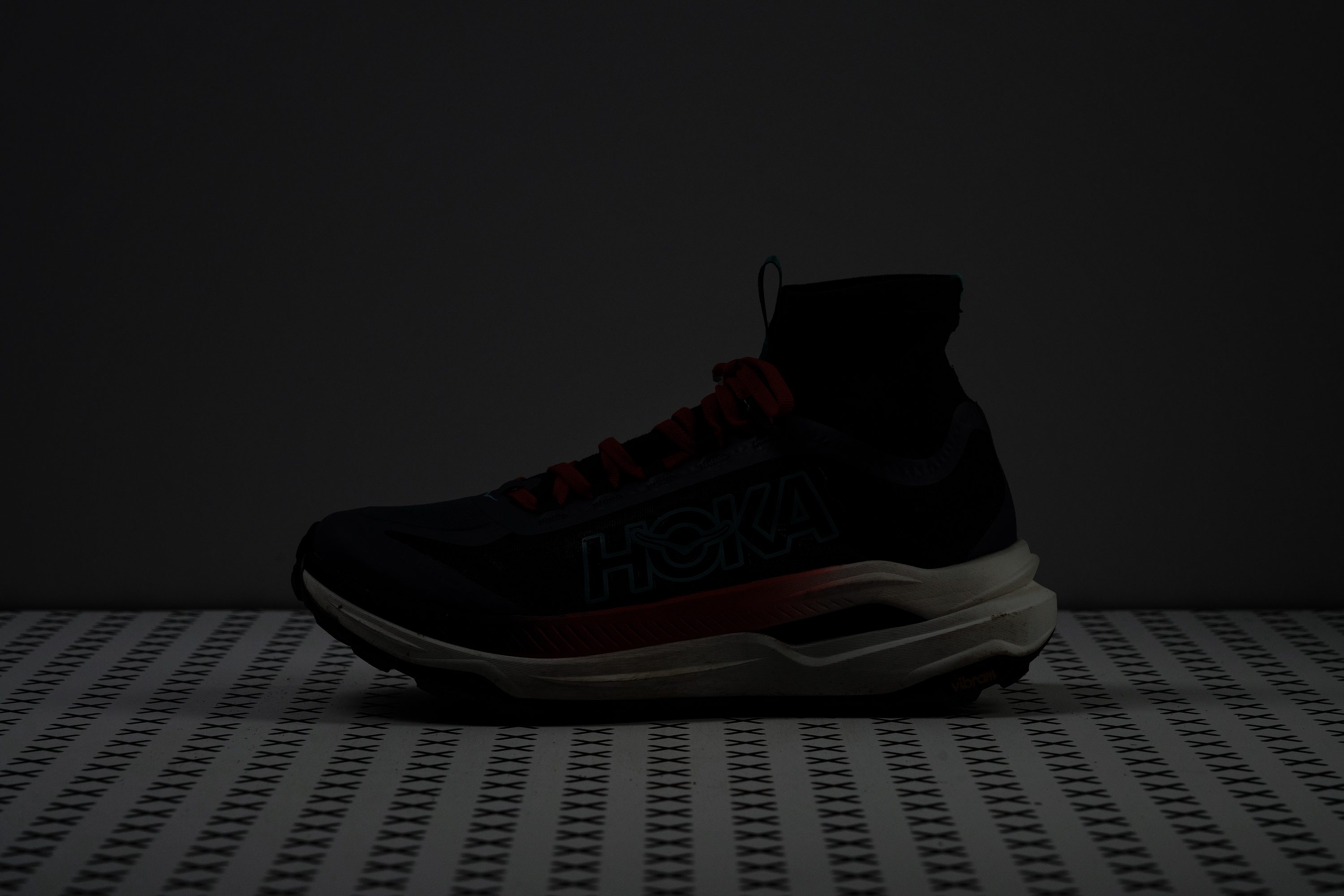
| Tecton X 3 | No |
Tongue padding
The lacing system gets the job done, though purists who favour traditional punched eyelets may not love the full lace-loop design. Since there’s no option for a runner’s knot, some might worry about lockdown—but with the snug, one-piece upper, we found it unnecessary.
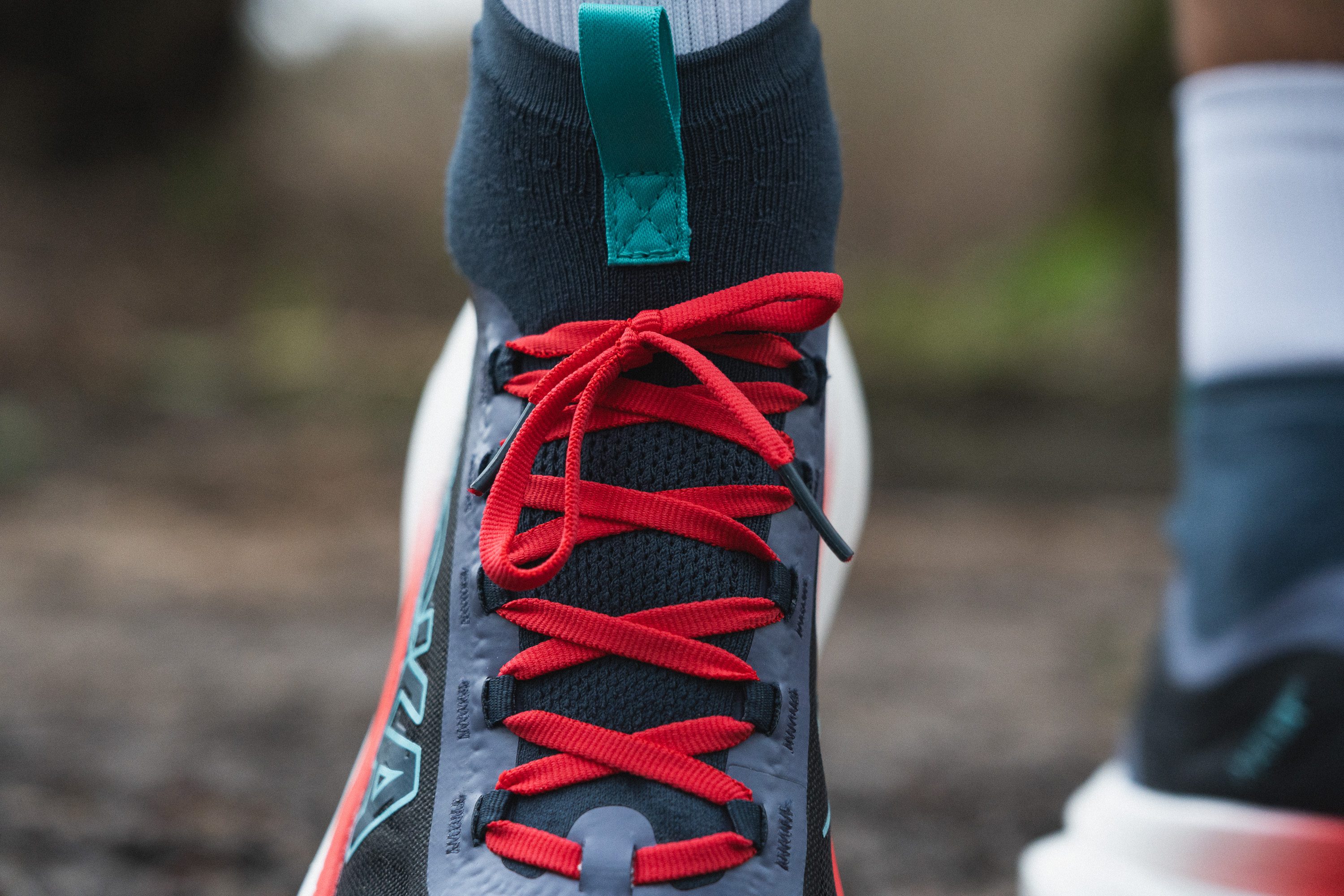
Designed for peak performance, we expected a featherlight tongue, and here it is. At just 1.5 mm thick, it's really pushing the limits of comfort. For this reason, we advise caution when tightening the laces to avoid unwanted pressure on the instep.
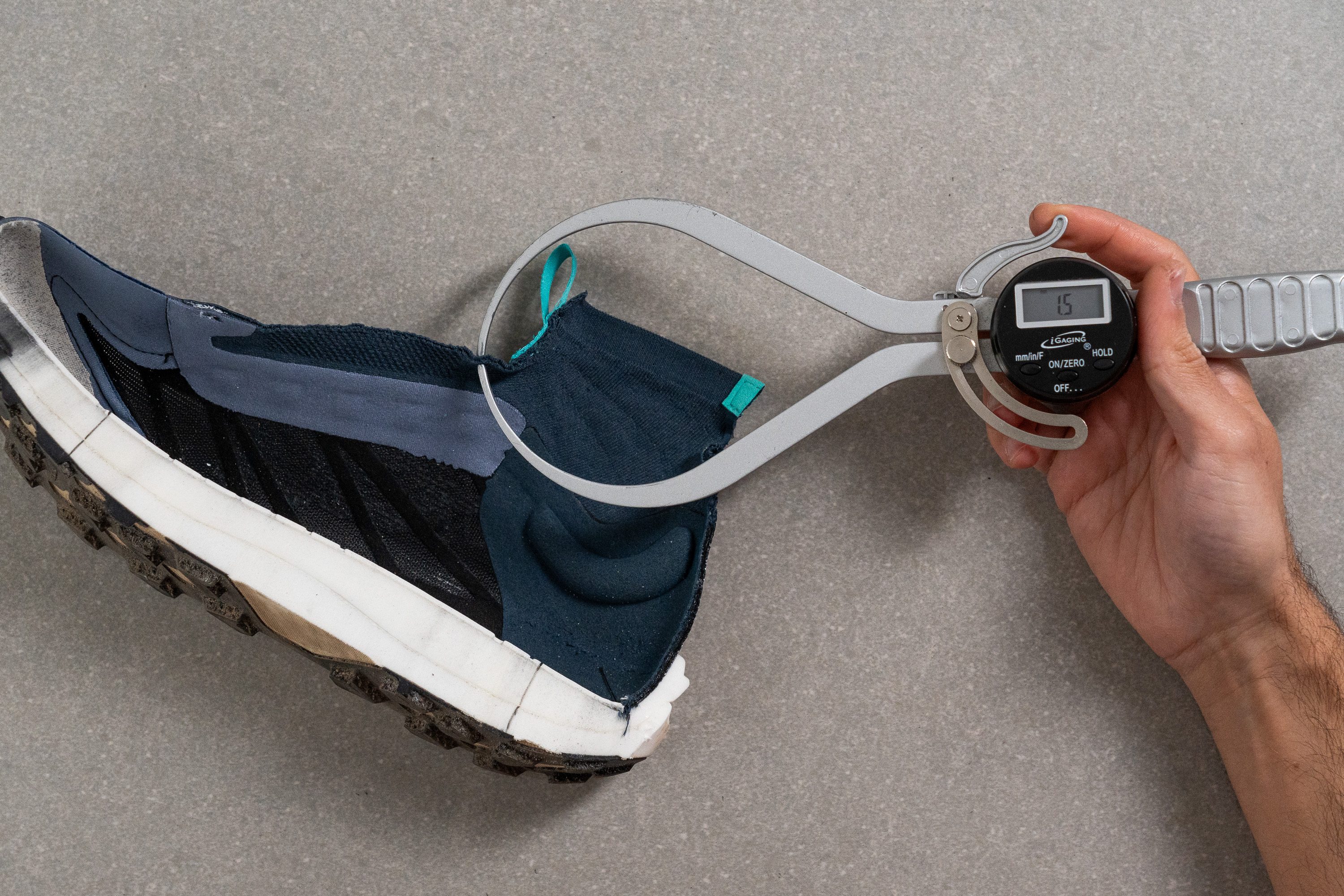
| Tecton X 3 | 1.5 mm |
| Average | 6.4 mm |
Tongue: gusset type
The Tecton X 3’s tongue features a wonderful sock-like design that shields the interior from debris while ensuring a secure fit. This is exactly the kind of detail we expect in a high-end trail racer!

| Tecton X 3 | Sock like |
Price
This ranks among the most expensive trail shoes ever, and for many runners, price alone might be a dealbreaker. We agree, it’s freaking steep, but it’s also a true supershoe, packed with world-class materials from top to bottom. So while the cost hurts, we can’t call it unfair.
| Tecton X 3 | $275 |
Heel tab
Ankle gaiters are often an extra add-on for trail shoes, but Hoka took a bold step with the Tecton X 3, integrating a super-high ankle gaiter—an huge shift from the Tecton X 2’s minimalist approach in this area.
Thanks to this built-in gaiter, we found that debris has almost no chance of sneaking into the shoe. However, those who dislike a sock-like, enclosed fit may need to look elsewhere for a more traditional trail racer like the Nike Ultrafly.
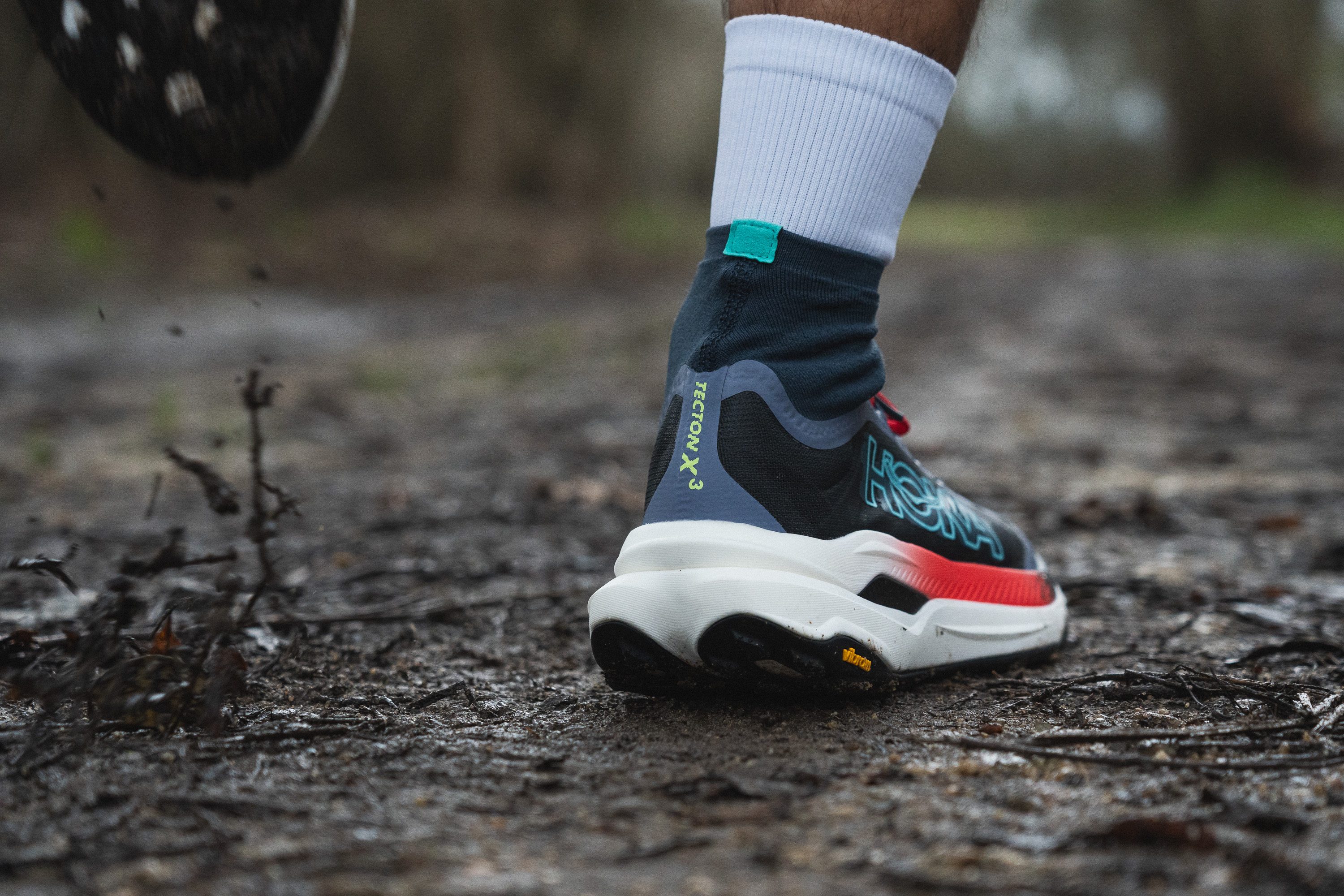
| Tecton X 3 | Extended heel collar |

